Personal Essay Example: Reasons Why I Want to Visit Japan
Where is one place in the world you would like to visit? Explain why you would want to visit this place, and what you would want to do or see once you arrive. Include specific details and examples in your response.
If I could visit any place in the world, it would be Japan. Many people, such as my friends, relatives, and reviews, told me how amazing Japan is. Japan is one of the most attractive places for tourists, millions of people each year travel there to try its exotic and traditional food. Another reason why is because of the beautiful sakura flowers that only bloom once a year. Japan also has one of the most unique hotels, one being a capsule hotel, like the name says you live in a capsule.
Japan is known for their natural beauty. There are many mountains, waterfalls, and forests, and most importantly, cherry blossoms. Like I said in my manifesto, I like adventuring to new places and especially in mother nature. As my parents say, I’m quite the photographer so, whenever I go to new places, I can add some photos to my collection and see many astonishing views. One of my wishes is that I get a Fujifilm X-T4, it is a camera that specializes in photography, and I want to capture almost everything that I do. If I go to Japan during April, I would definitely go to Chidorigafuchi. Chidorigafuchi is a seven hundred meters long river that leads to the Imperial Palace. The river is surrounded by cherry blossoms and you can take a boat/canoe ride down the river. Chidorigafuchi is one of the most popular places in Japan for viewing cherry blossoms, and during April, cherry blossoms bloom and shine at their brightest. Cherry Blossoms are one of my favourite types of plants because of how beautiful they are and how rare they are. Remember that this is a once-in-a-year time and the cherry blossoms die fast so if you get to see them, you are very lucky! The next place I would go to is Mount Fuji. Mount Fuji is a popular tourist attraction in Japan that a lot of people recognize. It is the thirty-fifth tallest mountain in the world and rises up to 12,388 feet, so I want to see it myself. When I’m at Mt. Fuji, I want to see around because there are five lakes and many temples that surround Mt. Fuji. There is also a lot of history, so I want to learn about it. An example is that Mt. Fuji was known as a sacred kami or spirit in the Shinto religion. The last place I would like to go is to a hot spring. Hot springs are very common because of all the volcanoes Japan has. Hot springs are very relaxing and are located in traditional Japanese inns.
Japan has one of the most unique and exotic foods in the world, that’s why I want to try their foods. Fun fact, 30% of the world's 7 Eleven’s are in Japan and it is pretty common to see a convenience store in every street. So whenever you need a cheap meal such as an egg sandwich, you can head over to 7 Eleven or Family Mart. Many shops in Japan have a traditional food called bento box. All families have a different recipe and they could be eaten for any meal, breakfast, lunch, dinner, and sometimes dessert. One exotic food that I want to try is omurice from Yukimura Motokichi. He works at Kichi Kichi and is most popular for his omurice. He entertains everyone with his cooking tricks, jokes, and makes a very memorable time for everyone. Omurice is a dish that contains fried rice and an omelette, topped off with some ketchup. Another dish I would like to eat is sushi, a traditional dish from Japan and is my favourite food of all time. I like sashimi over the rolls because I think that in sushi, the fish is the most important part of the combination. Sushi is a traditional food for the Japanese people and whenever you eat sushi in Japan, it may be pricey, but believe me, it tastes like heaven. Another food I would like to try is ramen. I love noodles and ramen is my favourite type of noodle dish. I would take tonkatsu ramen because ramen is about broth and tonkatsu ramen has pork bone broth. And for dessert, I would take mochi. Mochi has a wide range of flavours but I would take the green tea matcha because I drink green tea almost every day and it is my favourite type of tea. Unique food that is only grown in Japan is square or cube watermelons. They are essentially ornamental and are very expensive. They are around two hundred and fifty dollars and I want to see what’s so special about them. Another food I would like to try is street food. Every countries’ street food is unique but Japan’s stand out to me. There are more than two thousand items to try and street food doesn’t take very long.
There are a lot of tourist attractions in Japan and there is a lot I like to go to. I really want to go to Japan’s Disney World. I am a big fan of theme parks and I heard that Disney World is a very fun place to go to. So far, have been to Canada’s Wonderland and Universal and both turned out to be super fun. I really like Disney movies and now that they own Marvel or the Avengers, I really want to check out what they built for the Avengers. I also want to visit the Great Buddha of Kamakura. It is a colossal representation of Amida Buddha and is one of the most celebrated Buddhist figures. My family are Buddhists so it is nice to go here. Last but not least, I want to go to Hokkaido. Hokkaido is an island located north of Japan, taking up twenty percent of Japan’s mass and five percent of its population. Hokkaido is one of the most popular destinations for travelers in Japan. Boasting unspoiled natural sights, festivals, historical landmarks, coastline villages and the freshest seafood in the country, the island is sure to impress even the most seasoned traveler.
My third reason why I want to go to Japan is because of their unique hotels, one is a capsule hotel. Capsule hotels were also known as pod hotels are a type of hotel that has been invented in Japan. The room/capsule you get is roughly the length and width of a single bed and has the height for a person to crawl in and sit/sleep on the bed. The amenities you get would be the same as any other hotel, a/c, power sockets, slippers, etc. Amenities outside the capsule, you are given toilets, showers, Wi-Fi, dining rooms, and sometimes a cafeteria. It is around ¥2000 to ¥4000, which is 18 to 37 Canadian dollars, which is cheaper than most hotels. Once you get there, your clothing and footwear are swapped to Japanese clothing, yukata and slippers. Another unique hotel from Japan is bus and train hotels. Bus and train hotels both have the size of a business classroom in an airplane. They have comfortable reclining chairs that can turn into a bed. You are also given as many amenities as a hotel would.
In conclusion, I would like to visit Japan because I find that their natural beauty is really beautiful and their foods are very flavorsome. Japan, in general, is unique because I find that the culture, art, technology, etc is very different from other countries. I think that no other country can offer the same characteristics Japan has.

Related Samples
- Japanese religion and influence on culture
- Essay Sample on Education Should be Free
- Essay Sample about Population in Mongolia and Estonia
- James Madison and the Bill of Rights Essay Example
- Love Relationship Among Student Essay Example
- My Experience With Reading And Writing
- Essay about Education and Good Job
- Letter to Santa Example
- Good Role Model Essay Sample
- Essay Sample: What Is Happiness?
Didn't find the perfect sample?

You can order a custom paper by our expert writers
Home — Essay Samples — Geography & Travel — Journey — My First International Trip
My First International Trip
- Categories: Adventure Journey
About this sample

Words: 675 |
Published: Aug 24, 2023
Words: 675 | Page: 1 | 4 min read
Table of contents
Cultural immersion and perspective shift, embracing the unfamiliar, global citizenship and empathy, conclusion: a journey of transformation.

Cite this Essay
Let us write you an essay from scratch
- 450+ experts on 30 subjects ready to help
- Custom essay delivered in as few as 3 hours
Get high-quality help

Dr Jacklynne
Verified writer
- Expert in: Geography & Travel

+ 120 experts online
By clicking “Check Writers’ Offers”, you agree to our terms of service and privacy policy . We’ll occasionally send you promo and account related email
No need to pay just yet!
Related Essays
3 pages / 1253 words
2 pages / 951 words
2 pages / 707 words
2 pages / 1003 words
Remember! This is just a sample.
You can get your custom paper by one of our expert writers.
121 writers online
Still can’t find what you need?
Browse our vast selection of original essay samples, each expertly formatted and styled
Related Essays on Journey
The Hawaiian Islands, revered for their unparalleled beauty and cultural richness, present a unique voyage that transcends the boundaries of a typical vacation. This essay endeavors to delve deeper into the multifaceted [...]
Adventure tourism has emerged as a popular and thriving sector within the broader travel industry. This essay delves into the dynamics of adventure tourism, exploring its appeal, benefits, and challenges. Through an in-depth [...]
Every traveler has a cherished destination, a place that holds a special corner of their heart, a place that beckons them back time and time again. For me, that destination is the enchanting island of Bali in Indonesia. Bali's [...]
The protagonist embarks on a treacherous journey in extreme weather conditions, despite warnings from an elder. The story explores the conflict between human knowledge and animal instinct, with the man's knowledge ultimately [...]
Sri Lanka is a tropical country, located in Indian ocean. We can expect the rain anytime in the most parts. Sri Lanka is the best place for couples. It is surrounded by ocean, lush forests, rising mountain, waterfalls, it was [...]
Kowalska, M. (2019). Exploring Amsterdam Beyond the Party Scene. Travel Magazine, 43(2), 56-62.Smith, J. (2020). Discovering the Hidden Gems of Amsterdam: A Personal Travel Experience. Journal of Travel and Tourism, 25(3), [...]
Related Topics
By clicking “Send”, you agree to our Terms of service and Privacy statement . We will occasionally send you account related emails.
Where do you want us to send this sample?
By clicking “Continue”, you agree to our terms of service and privacy policy.
Be careful. This essay is not unique
This essay was donated by a student and is likely to have been used and submitted before
Download this Sample
Free samples may contain mistakes and not unique parts
Sorry, we could not paraphrase this essay. Our professional writers can rewrite it and get you a unique paper.
Please check your inbox.
We can write you a custom essay that will follow your exact instructions and meet the deadlines. Let's fix your grades together!
Get Your Personalized Essay in 3 Hours or Less!
We use cookies to personalyze your web-site experience. By continuing we’ll assume you board with our cookie policy .
- Instructions Followed To The Letter
- Deadlines Met At Every Stage
- Unique And Plagiarism Free
Essays About Japan: Top 5 Examples and 5 Prompts
Japan is a beautiful country famous for its lush landscape, delicious food, and well-mannered people. Here are some examples of essays about Japan.
A developed country in Asia known as the “land of the rising sun,” Japan has become a hot commodity for tourism and business. Japan is truly a sight to behold, from its beautiful cherry blossoms, efficient public transportation system, and delicious food.
Japan’s rich history has allowed it to develop into one of the most advanced nations in the world, and its technology is renowned worldwide. Moreover, its people are known for their discipline, hard work, and resilience, even in the face of severe natural disasters. Japan is, without a doubt, a country worth visiting.
If you want to write essays about Japan, here are our best essay examples and writing prompts to help you begin.
1. What Japan Taught Me About Life by Beth Louise
2. japan experience: reflection on japanese culture by rayan elhafiz abdalla, 3. what i learned about design from travel in japan by teo yu siang.
- 4. The best time to visit Japan by Pat Kay
5. A Day Trip To Kobe by David Swanson
5 prompts for essays about japan, 1. what does japan mean to you , 2. misogyny in japanese society, 3. why visit japan, 4. japan’s history, 5. living in japan: what’s it like.
“In fact, there’s so much to see and do that it feels like a lifetime of exploring would never uncover all that’s on offer. It’s also a bright, buzzing lesson in living fast; just wandering around in the crowds is a massive adrenaline rush, and Monday nights are as mental as Fridays. But despite the intensity of a city so large, people are calm and quiet. It’s the most magical juxtaposition. Everything is moving at light-speed, but with such efficiency and thoughtfulness, that it feels like a well-oiled, intuitive machine, powering a ride that you never want to get off.”
In her essay, Louise writes about her experience traveling to Tokyo, Japan. She compares it to a machine, with all the people in the city playing their part. She is amazed by the people’s focus, discipline, manners, and sense of purpose, and she can better appreciate life’s simplicity. She is mesmerized by Japan and recommends booking a trip to Tokyo as soon as possible.
You might also like these essays about being yourself and essays about college .
“People were very friendly, they will greet you even if they don’t know you. One shocking incident that I will not forgot, is when the cashier was trying to help me put all my coin money in my wallet with me. In America I am not used to having someone put my money inside my wallet, that is really invading personal space. However, I learned that in Japan it seems normal to just drop off someone’s coins in their wallet.”
Similar to Louise, Abdalla reflects on new things he discovered about Japan and its people during his time there. These range from trivial things such as the “Pokemon Go” rollout in the country to the Japanese’ sense of honor and discipline. He recounts an experience in which the cashier was helping him put his change into his wallet, something he is not used to back home. He provides excellent, although short, insight into Japan, its culture, and its people.
“Everything around us is designed: from the smartphones we use every day to the tactile paving on a walkway. But it’s often hard to examine the designed environment around us with eyes as fresh as a tourist’s. So if you’ve made it to the end of this post, I’ve got a challenge for you: The next time you take a walk outside, try to become aware of the thousands of design decisions around you. What works, and what can be improved?”
Siang writes about the edge that Japanese cities and society in general have because they are well-designed. He cites innovations such as fast, automated cash register machines and aid for the visually impaired and recalls lessons such as the importance of accessibility when designing something.
4. The best time to visit Japan by Pat Kay
“When people ask me “When is the best time to visit Japan?”, I usually reply with “anytime”. Japan is always a good idea, at any time of year. It’s truly an all-year-round destination that provides vastly varied experiences throughout its distinct 4 seasons. Whether you’re a traveller who loves snow, or one who thrives in humidity; a traveller who wants to see beautiful nature changes, or wants to be thrown into crowds; whatever your style of travel, there’s a season and a time for that.”
Kay describes the weather and activities during the different seasons in Japan, giving readers an idea of when they would prefer to visit. Japan ranges from the ethereal but chaotic cherry blossom season to the calm, frigid snow season; however, each year’s season has its own charm. Kay’s essay gives good insight into the best times to visit Japan.
“When planning a visit to Kobe, consider the fact that the city has been completely rebuilt since 1995, following the great Hanshin earthquake that leveled much of the city. Except for a few memorials, you likely won’t be aware of the destruction at all. Instead, what you will discover is a cosmopolitan port city where foreign influences intermingle, museums are dedicated to sake, and a conveniently compact and walkable quarter showcases a robust nightlife scene that has featured jazz on the menu for nearly a century. Oh, and, of course, there is the beef.”
In this short write-up, Swanson lists the best things to do in Kobe, Japan, a place best known for its top-quality beef. However, there are many things to do in the city besides eating beef, such as viewing historical buildings, going to the hot springs, and visiting the botanical gardens. However, Swanson notes that eating is an integral part of a trip to Kobe, and one should not miss out on trying the beef.
In your essay, you can write about the country’s significance to you. For example, are you from there, or do you have Japanese ancestry? Have you visited? Write about your connection to the country and why this connection exists in the first place. If Japan has a special place in your heart, this essay topic is for you.
When editing for grammar, we also recommend taking the time to improve the readability score of a piece of writing before publishing or submitting
With all its glory and excellence, Japan is less evolved in gender equality. So how are women treated in Japan? First, delve into research about the treatment of women in Japanese society, and show how the culture differs from modern western gender equality ideologies. Then, discuss why Japan is behind in encouraging women’s equal rights. Make sure to cite research, statistics, and interviews to support your point.
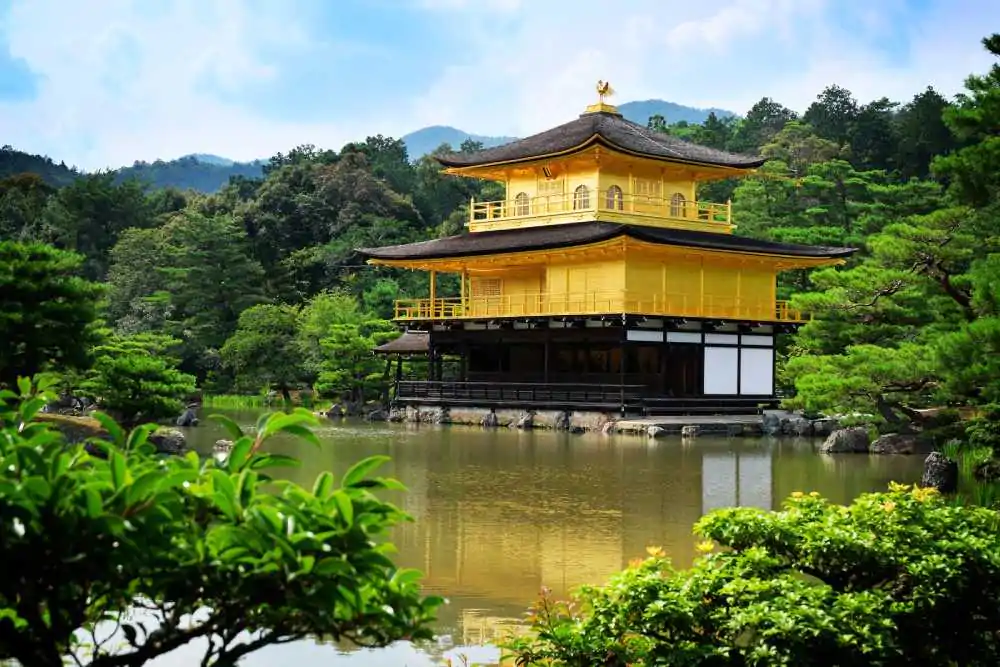
This topic is straightforward; whether you have been or not, try to persuade others to visit the country. Include highlights that others should visit and suggestions for places others can visit. If Japan was a bad experience for you, go the other way: why should you not visit Japan?
Japan has a dark history surrounding its role in World War II. In your essay, briefly explain these events and research their effects on Japan after the war. How did the war change Japan- for better or for worse? Elaborate on the impact and, as always, include references to strengthen your arguments. This is quite a broad topic, so you can focus on one element of Japanese society: values, city planning, relationships with tourists, race, inequality, and gender equality.
Based on reading articles and sample essays as well as any experiences in Japan, list the advantages and disadvantages of living in Japan and conclude whether it would be ideal for moving to Japan or not. Use anecdotes from travel writers or people who live in Japan to show why living in japan is enjoyable or not so enjoyable. Pick a stance for a compelling argumentative essay.
If you are interested in learning more, check out our essay writing tips !
If you’re stuck picking your next essay topic, check out our guide on how to write an essay about diversity .

Martin is an avid writer specializing in editing and proofreading. He also enjoys literary analysis and writing about food and travel.
View all posts
- South Africa
- The Philippines
- Antigua & Barbuda
- The Netherlands
- Galapagos Islands
- Mental Health
- Volunteering
16 Surprising Things I Learned From My First Time in Japan
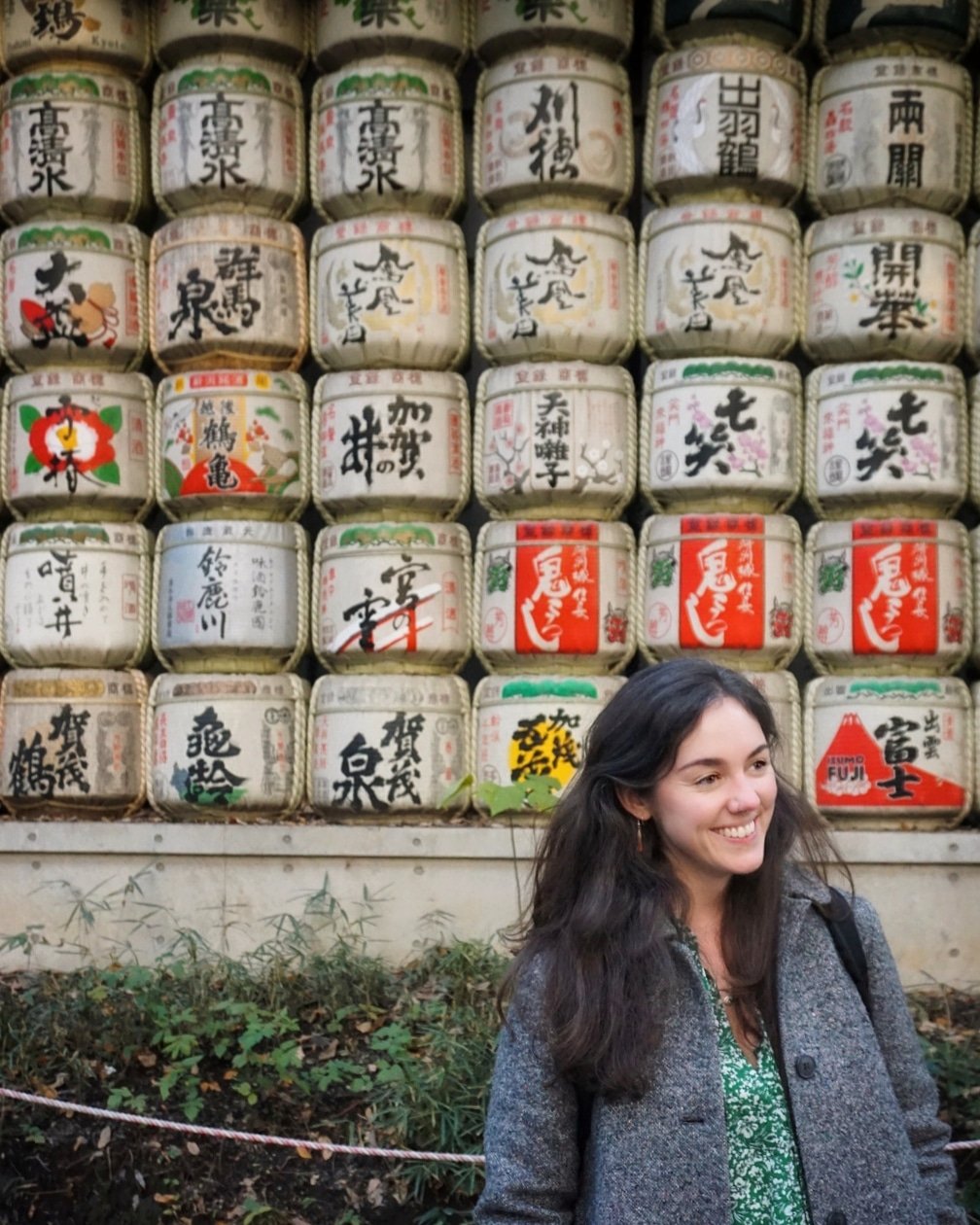
I barely remember my first time in Japan.
Although I was only eight years old to be fair.
In 1996, Japan was a world away from my childhood life in London – a place which had barely crossed my mind – but then my dad got a job directing a play in Tokyo , and that summer my mum and I flew out to join him. We spent a month exploring Japan as a family, and for a child who’d never been out of Europe before, my first time in Japan was nothing short of incredible.
Alas, my memories now are somewhat hazy. I can remember the sugar-fuelled excitement of Goofy’s bouncy house at Tokyo Disneyland; eating hot vending machine spaghetti on the grass at the base of Mount Fuji; staring wide-eyed at the perfect plastic food replicas outside restaurants.
I remember my dad’s joy at the high-speed trains which arrived the exact second they were expected, and my mum’s happiness when a group of Japanese businessmen sent over a bottle of sake to our restaurant table – followed by a bowl of ‘hot and cold ice cream’ for me to try. And of course I immediately fell in love with sushi.

Japan was the first truly different country I ever travelled to, and ever since it’s been firmly lodged in my mind as the most wonderfully surreal place. So when I finally returned to Japan almost two decades after my first visit, I was over the moon to discover that it’s just as fascinating as I remembered!
But it’s different navigating a country as an adult. I also had to get to grips with a number of things, from following traditional rules about shoes, slippers and toilet etiquette to learning the correct way to wash my hands at temples and how to eat my noodles.
So if it’s your first time in Japan, here are some of the things you should know before you go.
Pin me for later.

1. Japanese toilets are just as incredible as you’ve heard.
They speak, they clean themselves, they come with all manner of gadgets and gizmos – and the ultimate amazing factor? The toilet seat is heated. It seems like all of Japan’s toilets are amazingly high-tech, including public bathrooms in airports, at restaurants, and even on the street.
The full extent of Japan’s bathroom services can get a bit complicated for us tourists, so luckily there’s usually a sign (or five) on the wall to help you understand what to do. As long as there’s an English translation available, you can choose from a range of buttons on the wall-mounted control panel to invoke bidet-like water jets, a speaker playing birdsong, or the sound effect of running water to mask any noises you might be making.
The only downside? Normal temperature toilet seats will feel like something of a disappointment afterwards.
Read more: the worst toilets I’ve ever experienced on my travels

2. Shoe etiquette in Japan is a real thing.
It’s considered impolite to wear shoes inside in Japan. Pretty much anywhere you go – hotels, temples, restaurants and tourist sites – you’ll be expected to remove your shoes at the small atrium just inside the door, a space known as ‘ genkan ‘.
As with many traditions in Japan, this one harks back over many generations. The floors of Japanese homes and buildings have long been laid with tatami mats (woven straw mats), and they’re really hard to clean if you’re tracking outside dirt onto them. When you combine this with the Japanese custom of eating and sleeping on the floor, it makes sense that outdoor shoes don’t belong there.
What’s more difficult to get used to is the specific method by which you have to remove your shoes – which goes something like this:
- Step into the ‘ genkan ‘
- Walk towards the raised step which signifies the separation between ‘outdoor’ and ‘indoor’
- Turn back to face the door you’ve entered through
- Nudge your outdoor shoes off, making sure they remain pointing towards the outside world
- Step backwards and up onto the step behind you, either in your socks or in slippers (which have been provided by the place you’re entering)
- Leave your outdoor shoes waiting patiently for when you return
My top tip? Wear shoes which are easy to slip on and off when you’re in Japan – it’ll make your shoe-related life much easier.

[ Image via Flickr ]
3. Get used to wearing slippers everywhere indoors – except on tatami mats.
Generally speaking, slippers are worn everywhere indoors – except for when you encounter tatami mats. The soles of slippers are considered not clean enough to touch tatami, so you take your first set of slippers off and then continue walking in your socks.
This can get confusing.
Case in point: in one traditional hotel I stayed at, there were tatami mats in the restaurant but nowhere else in the building. That meant I removed my outdoor shoes at the genkan, put on hotel slippers to carry my suitcase to the lift, exited the lift and had to remove my slippers again because the lift had opened to tatami matting.
Thankfully nobody expected me to understand exactly when to switch from shoes to slippers to socked feet to slippers again – but it’s worth knowing the customs exist. Particularly when you come face to face with ‘bathroom only’ slippers…

4. Wear double socks if you’re prone to cold feet (and to hide any unexpected holes!)
After taking my shoes off I spent so much time in castles, temples and shrines walking around on tatami mats, which don’t really retain any heat. If you also have terrible circulation in your feet like I do, this is a crucial thing: wear two pairs of socks in Japan!
The positive aspect of double socks is there’s less chance of revealing any unsightly sock holes. While it’s understandable that you wouldn’t intentionally put on worn-out socks, I often end up with toe holes and was a little nervous about this happening in Japan. Double socks = zero problems!

5. Public foot spas must be tried to be believed.
For a country so concerned with dirty shoes and foot hygiene etiquette, it seems conflicting that Japanese people are also keen to sit in public spaces and soak their legs in hot water.
But thanks to the hot springs (‘ onsen ‘) which criss-cross Japan, the country is filled with public outdoor foot spas, known as ‘ ashiyu ‘. These shallow pools of hot volcanic water are usually placed at street corners and are free for anyone to use.
A particularly special version of an ashiyu is this wooden steam foot bath in Ureshino, Saga Prefecture. These aren’t a common sight and our Japanese guides were really excited that we tried it out!

6. You can soak in a private onsen on your hotel roof.
Japan’s volcanic landscape means there are hot springs (‘ onsen’ ) all over the country – and understandably it’s resulted in a lot of onsen tourism, with entire towns clustered around a hot spring.
Public onsen is the most common way to experience the hot spring lifestyle, where both indoor and outdoor bath houses are separated by gender. Some of the rules for a public onsen include:
- getting naked
- washing your body before getting in
- not using soap in the water
- tattoos are not usually allowed (although some places are OK with it)
If you’re not too keen on being naked in a communal bath, there are also lots of ryokans (traditional Japanese guesthouses) which offer private onsen attached to your bedroom. Sometimes they’re even on the roof!

7. It’s traditional to sleep on the floor in Japan.
Many Japanese people sleep on a futon mattress laid out on the floor. The most common reason seems to be because it allows for more space: once you’ve woken up you can pack away your bedding and use the room for other activities. Sleeping this way can also save you money (as a futon is much cheaper than a bed frame and mattress!) and keeps your body in better alignment during the night.
If you stay in a ryokan (a traditional Japanese guesthouse) then you’ll most likely sleep in this traditional Japanese style (although they often have modern rooms available too). Don’t be surprised when you check into your room and don’t see a bed – staff will set up the futon while you’re at dinner.
Here’s a tip: if the futon mattress feels too thin for you, check behind the sliding wardrobe doors as there are often more mattresses hiding away. One night I had a ‘Princess and the Pea’ situation and eventually ended up sleeping on approximately four futons laid on top of each other – which was a lot more comfy.

8. Japanese breakfasts can be absolutely epic.
In all the countries I’ve travelled to, breakfast in Japan is the most lavish I’ve ever seen. It typically includes a bare minimum of steamed rice, grilled fish and miso soup but can involve dozens of components too: little dishes of sides like pickles, egg, cold noodles, tofu, vegetables like onion and pepper, and dried seaweed. It’s all washed down with a big pot of green tea.
The sheer number of different dishes means you can have little mouthfuls of everything in rotation. Perfect for a grazing type of eater like me!
Most ryokans will serve a traditional Japanese breakfast with local delicacies. However, just in case eating rice on an empty stomach every day is not your idea of a good breakfast, double-check if your chosen accommodations serve continental breakfasts too.

9. Japanese restaurants display plastic food replicas outside to tempt you in.
My absolute favourite memory from my first time in Japan? Standing with my nose pressed against restaurant windows, staring at the plates and bowls of perfectly detailed food – all of which was fake. But it looked so damn real!
Japan’s replica food industry began in the 1930s and is now worth $90m . These faithfully reproduced bowls of ramen, platters of sushi, tempura prawns and even pints of frothy beer are made from wax and plastic, and they allow foreign visitors to point at their chosen dishes instead of scrutinising a Japanese-only menu.
You can also buy mini versions of these models in the form of magnets, erasers, pencil sharpeners and key-rings – which is why I’m now the proud owner of a piece of prawn sushi stuck onto my fridge.

10. Food in Japan is more raw than you’d think!
Back when I was eight years old, I used to boast smugly about how delicious I found ‘raw fish’ – yes, my love of sushi made me insufferable – but I hadn’t quite understood the extent of Japan’s adventurous eating.
Japan’s cuisine involves strong flavours, peculiar textures, and using every part of an animal. Often when it’s thinly sliced and raw, sashimi style. On this trip, I ate at a roadside restaurant where we grilled our own oysters, scallops, clams and sea urchins; I was offered raw beef tongue and a strange cheese made from sake run-off; but the pinnacle was one evening in Tokyo where I was presented with raw chicken sashimi. A lifetime of warnings about salmonella from my anxious mother meant I had a total inability to even contemplate eating it.

11. Japan has an eternal love of ramen.
The delicious noodle broth dish known as ramen is everywhere in Japan, available both as a dried, pre-packaged option and at sit-down restaurants. The solo dining experience at Itchiran, a ramen-only chain, is amazing – but my crowning ramen-related moment was actually at a 7-Eleven.
I stood with my Japanese guide looking at the floor-to-ceiling shelves stacked with three dozen different kinds of packaged ramen and asked if she was familiar with all of them. Immediately she started pointing at different ones: “That one is my favourite,” she said, “and this is the spicier one… this one I always have in the cupboard but it’s a quick dinner… and that one I eat when I’m drunk…”

12. Slurping your food is encouraged.
Given that Japan has a strong focus on politeness and etiquette, it’s a wonderful anomaly to sit in a restaurant and listen to your fellow diners noisily slurping their food. But in Japan, loudly sucking up your noodles is a sign of enjoyment – and there’s a logical reason too, as it allows air to circulate around the noodles and cool them down, enhancing the flavour.
Unfortunately, it’s also one of Japan’s cultural aspects which hasn’t translated well to foreign visitors. There’s even a name for it – nu hara – which sounds Japanese but is actually a shortened form of the phrase ‘noodle harassment’. Someone on Twitter mentioned it and the name spread like wildfire!

13. You’re actively invited to eat by yourself.
Japan has a nation-wide chain of ramen restaurants called Itchiran, which is famous for its complete lack of face-to-face interaction. The process goes as follows:
- Pay for your ramen at the automated vending machines
- Step into a narrow room divided into booths big enough for just one person each
- Sit down and order your chosen ramen dish by circling items on a paper menu
- The hanging curtain in front of you rises up
- A pair of hands appears and quickly takes your paper menu away
- After a few minutes, a steaming bowl of ramen is thrust onto the table
- You eat, happily slurping away in total privacy and anonymity!
As a self conscious person, eating at Itchiran was absolutely incredible. And their ramen is pretty damn tasty too.

14. You can buy anything from a vending machine – even seaweed!
The Japanese love convenience, which might explain why you’ll see vending machines everywhere in Japan. Usually brightly painted and placed in stations and on the street, lots of Japanese vending machines stock typical stuff – like packaged snacks, sandwiches, and hot and cold drinks – but there’s more unusual machines too.
Take your pick from comic books, clothes, batteries, bananas and beer, and if you happen to fly through Saga airport you should keep your eye out for this nori vending machine I saw! Turns out the Japanese love dried seaweed so much that it needs to be available at all times.

15. Japan has over 300 flavours of Kit Kats.
Kit Kat chocolate bars are really popular in Japan – and a cursory Google search reveals why. The name sounds like ‘kitto katsu’, a common Japanese expression of good luck, so Kit Kats are often given to wish people luck.
In the last twenty years, Nestle has released more than 300 Kit Kat flavours including apple, chestnut, soy sauce, miso soup and wasabi. Some have only been available for a limited run, while others are specific to different regions of Japan – so when we left Saga in Kyushu Prefecture I was able to get my hands on Kyushu’s local Kit Kat, flavoured with purple sweet potato!

16. The Japanese love giving gifts.
When I first visited Japan as a child, I was literally weighed down with gifts from my dad’s Japanese cast at the theatre: jointed puppets, my name artistically painted in katakana characters , and a Disney music box which I still have today.
It happened again on this trip too. Within hours of my arrival in Tokyo I’d already been gifted a box of beautifully hand-painted chopsticks from a sushi chef – and over the next few days I amassed little folded pieces of origami, a handful of badges, stickers, postcards, key rings, and a huge amount of food.
Along with the souvenirs I managed to cram in, my suitcase weighed an extra five kilos by the time I flew back back home. And when I checked in for my flight, the kindly airline staff even gave me a little bag filled with gifts and a note. How’s that for Japanese hospitality?!
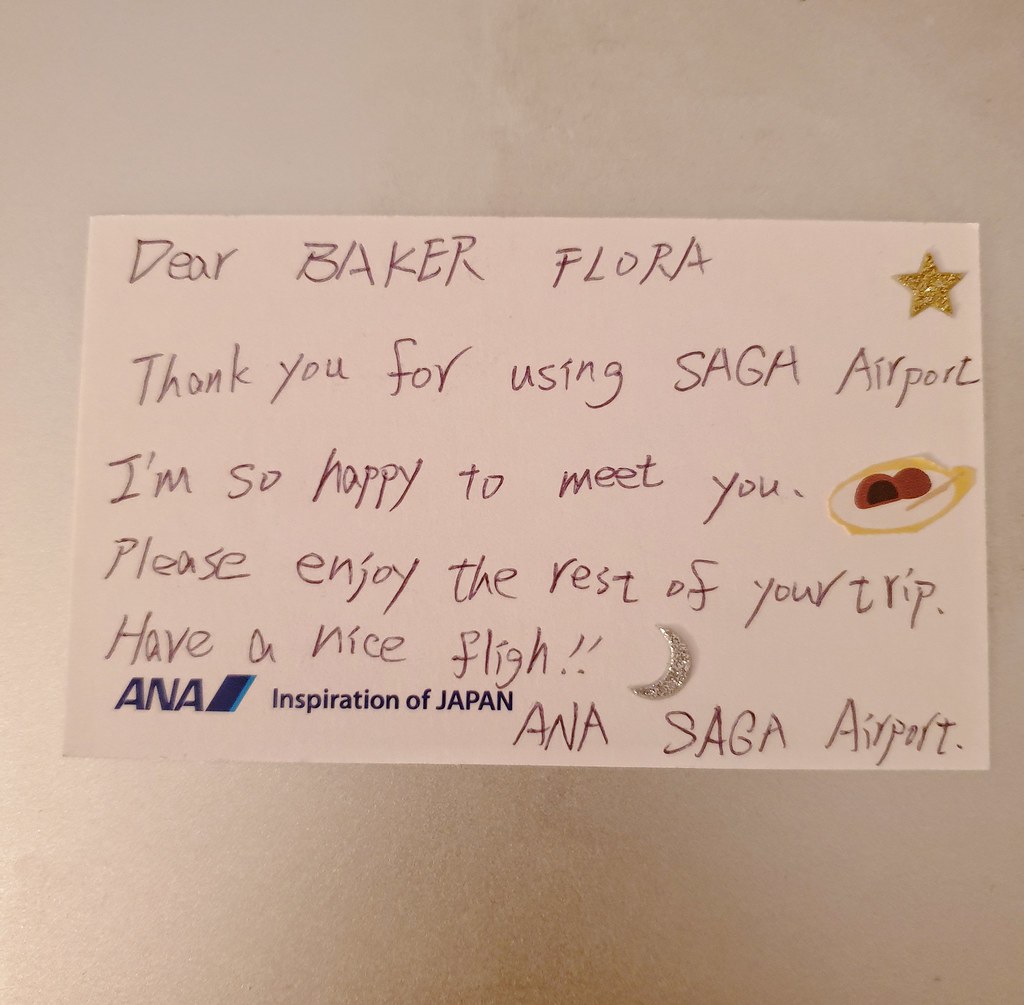
Pin this article if you enjoyed it!

NB: my trip to Japan was supported by Tokyo Metropolitan Government and #KyushuxTokyo – but the observations about plastic food and talking toilets are all my own.
Flora Baker is the founder and editor of Flora the Explorer, where she writes about her travels around the world, her volunteering exploits and her ongoing attempt to become fluent in Spanish by talking to anyone who'll listen. Follow her on Facebook , Twitter , and Instagram .
You Might Also Like

Rural Village Life in the Rice Terraces of Bali
A village matriarch.

Volunteering with Children Abroad: the Issues You Should Know
Globetrotting Lottie
300 flavours of Kit Kat – get me there now! I’m planning a trip to Japan (my first time) later this year so this is a really nice insight.
A Day Trip to Shibamata, Tokyo's Retro Japanese Neighbourhood
[…] when you’ve just arrived in Japan, there’s no time to waste. So the next morning, still jet lagged and unsure of what time my […]
Leave a Reply Cancel reply
This site uses Akismet to reduce spam. Learn how your comment data is processed .

Traveling to Japan for the First Time: Planning a 1-2 Week Trip Making your first trip to Japan an awesome one
May 8, 2012 • words written by Koichi • Art by Aya Francisco
Traveling to Japan for the first time can be overwhelming. I understand! There's a lot to see and do. That's why I put together a "first-timers" Japan travel itinerary, built on my 20+ years of traveling to and from Japan.
This sample trip is for people heading to Japan for 1 to 2 weeks (which seems like the standard visit time for most people). Of course, there are so many things to see in Japan besides those featured on this trip itinerary. That's why I broke the travel plan into a 2 week stint so you can customize your vacation, removing and adding things as necessary.
That said, I hope this is helpful to those of you visiting Japan for the first time.
Things To Know
There are a few important things to know that have nothing to do with the actual places. They are:
Whether you travel to Japan for one week or one-point-five weeks or two weeks, the general route stays the same. You'll do Tokyo area, then Kyoto, then Nara, then Koya, and then back to Tokyo. Throughout the route, I'll mark things as "optional" as well. If you're only staying a week, I'd recommend cutting out these things (unless you really want to go to them, then cut something else out). If you're staying for two weeks, you should be able to go to all of these places, and maybe even diverge off to other places. In fact, I highly encourage this! Go where you want – this route is merely a suggestion.
Also keep in mind that I'm just going to be providing locations. You'll have to do your own research as to how to get to them. Google and Google Maps helps a lot with this. I believe in you.
Whether you stay a week or two weeks, I'd recommend getting the JR Pass . This is like a magical golden ticket that gives you unlimited JR train rides (bullet train too) to anywhere around Japan. Not all things are free (for example, non JR trains as well as most subways), but if you take three rides on the Shinkansen that will usually make it worthwhile. You can get a JR Pass at jrpass.com (where I got my last one). Just be sure to take into account the time change when you schedule your ticket dates. Going to Japan involves traveling through both space and time.
Finding Places To Stay
I don't really cover places to stay in this article, just the places to go to. Finding someplace to stay is up to you, though there are plenty of resources out there that will help you. I recommend hostels for adventurers / students / people with no money (they're fun, cheap, and way less sketchy than other hostels I've been to). Guest houses are also great if you can find them. They tend to be a little cheaper than hotels, but the food / environments are a lot more interesting. And interesting is what you want when you travel to Japan.
Since this is a pretty standard trip, most of the places are going to be pretty bag friendly. I wouldn't bring a ton (lots of hotels have washing machines too), and would definitely recommend a backpack or something with wheels. Don't make the mistake of bringing something you're not comfortable carrying up and down long flights of stairs. You will run into a lot of these getting on and off trains, so if your biceps are tiny, only pack whatever you can lift (preferably less). Also, bring a lightweight duffel bag (or you can buy one) for the optional shopping you can do at the end of your trip.
That being said, let's get started! You have some traveling to plan.
Day 1: Fly Into Tokyo
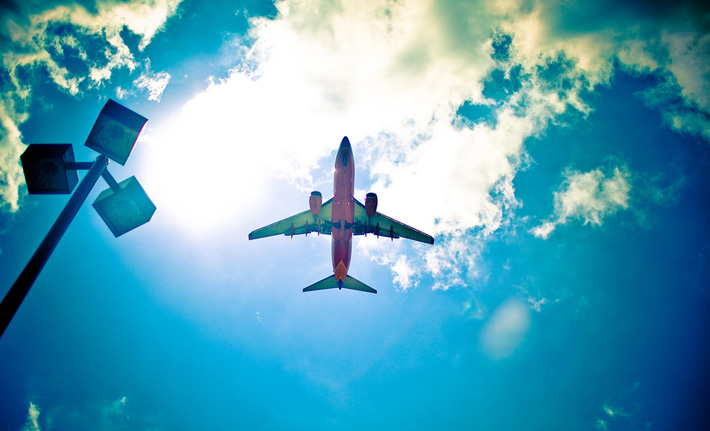
Flying into Tokyo isn't terrible, but it isn't great either. Depending on where you're coming from, you may also be terribly jet lagged. If that's you and you're on the 2-week schedule, you get an extra day to take it easy in Tokyo. Nice. If that's not you, you better be ready to go. No rest for the weary. After getting to the airport, you'll need to go pick up your JR Pass (should be included with your ticket). If your flight comes in too late (and the ticket place is closed) I'd recommend shelling out the $30 or so to go into Tokyo without the JR Pass and get it the next day in the city.
Optional: You can also pick up a 3g hotspot / internet dongle for your computer if you'd like. Finding free wifi in Japan is a huge pain, and getting one of these will pay for itself if you need to do a lot of work, or something.
Once you've gotten your ticket, hop on the JR Narita Express (NEX) to Tokyo. When you get to Tokyo, check into wherever you're staying and scope things out. It's probably evening by now anyways, so do your best to unjetlag yourself and go to bed so you can wake up early.
Day 2, 3, & 4: Tokyo
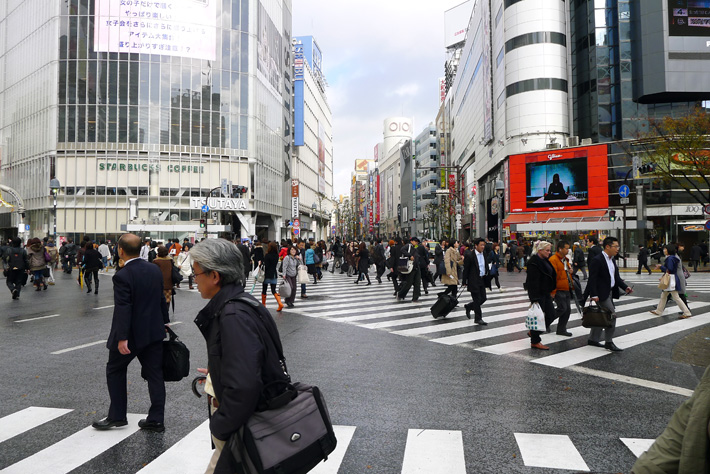
*If you're only staying for one week, cut out days 3 and 4 and then skip to Day 7. Alternatively, you could skip Day 2 as well and choose to do Day 5 or Day 6 (then your Tokyo time will be your shopping time on your way back). If you don't really care about big cities like Tokyo, skipping this section won't be too bad! :)
For the first few days, you'll be exploring Tokyo. So many people. So many things. Hopefully by the end of your Tokyo time you'll feel so tired of it you want to go somewhere nice and peaceful (don't worry, you will!). There are various areas of Tokyo worth visiting, and they're all quite easy to get to via the subway system. As long as you're not hitting it during rush hour, you'll probably have a great time scooting around. Since there are so many different tastes out there, I thought I'd list out the main places worth visiting in Tokyo, and then you can pick and choose what you like. I'll even sort them by areas.
Central Tokyo
Akihabara: This area should be on every nerd's Japan itinerary. It's famous for its electronic shops and otaku culture. So, if you're into either of these, this is a fun place to be. Make sure you look up, too. Lots of multi-story buildings filled with all kinds of weird things. You can spend a while walking around here.
Northern Tokyo:
Asakusa: Asakusa has the feeling of an "old" Tokyo, I think. You can visit the Sensoji (famous Buddhist Temple) and Asakusa Shrine or hit up some of the various shopping lanes.
Ueno Park: Ueno Park is probably one of Japan's most well known parks. Besides being parkish, it's full of museums, shrines, temples, as well as the Ueno Zoo. Definitely the kind of place you fancier folks will enjoy. You can spend a whole day here, if you're into this kind of thing.
Roppongi Hills: Want to see Tokyo from somewhere up high? Come to Roppongi Hills. You can go up into the Mori tower and look down on all those tiny people. Pro Tip: They don't like it when you try to throw pennies off the observation deck. Also worth noting is the Mori Art Museum.
Kappabashi: Do you know how a lot of Japanese food places have fake foods outside showing you what the food looks like? There's a chance they got it at Kappabashi, the kitchen capital of Tokyo. You can buy things for your restaurant, but the best part is the fake food, I think. It's surprisingly expensive, too.
Western Tokyo
Shibuya: Shibuya is just a ward of Tokyo, but it's particularly known for all its fashion and culture. Fashionistas should put it on their Japan itinerary. A lot of shopping can be found here, but there's also the Hachiko Dog Statue as well. Scope it out but come back in the "shopping days" at the end of your trip.
Love Hotel Hill: Technically this is part of Shibuya, but it's worth noting on its own. This is just an area with a lot of love hotels. Pro tip: They won't let three people in at a time, so if you want to check one out as a group, you'll have to break up into pairs or bring a body pillow.
Shinjuku: Shinjuku's kind of the party district, though that may be because of Kabukicho (northeast of Shinjuku Station) which is Tokyo's big red light district. If you're into nightclubs, bars, pachinko, neon, and other ahem things, this will be a place you'll enjoy.
Harajuku: Love crazy outfits? You'll fit in right here. Harajuku is home to Tokyo's teen fashion and cosplay (if you visit on a Sunday). There's also plenty of shopping and crepe stands as well (yum).
Meiji Shrine & Yoyogi Park: These two places are pretty close to each other, so I'm putting them together here too. It's also a good place to go from Harajuku, since you'll use the same train station. The Meiji Shrine is just one of many shrines in Japan, but it's particularly interesting if you're into modern Japanese history. Yoyogi Park, on the other hand, is just a really big park. Both are nice, though, if you're looking to get out of the cement jungle known as Tokyo.
Day 5: Monkey Park, Jigokudani

Have you heard of those Japanese monkeys that hang out in the hot springs? This is one of those places, though depending on the time of year, they may not be spending too much time in the hot springs. I like this place in Winter, but other times are good as well. Summer means baby monkeys, after all. To get here, you'll have to go North of Tokyo to Nagano (Shinkansen it!). From Nagano Station, take Nagano Dentetsu to Yudanaka. From there, you can take a bus to the Kanbayashi Onsen, which has the entrance to the Jigokudani Yaen-Koen. It'll be a 30+ minute walk (depending on how much you stop) to get to the actual monkey area, though you may start seeing monkeys before then if you're lucky. Check out the livecam , too!
If you're going to Jigokudani, I'd maybe recommend heading up here at the end of Day 4 and staying the night in Nagano. There's some interesting things up there too (that's where they did the Winter Olympics in 1998!), so feel free to head up a bit earlier and check things out. Then, the next morning (Day 5) you can head out bright and early to Jigokudani and take your time with the monkeys and possibly hit the onsen. It's a nice place. Then, you can head on back to Tokyo the same night.
Day 6: Toshogu Shrine, Nikko

Nikko is the mausoleum for Tokugawa Ieyasu. Basically, he and his relatives ruled over Japan as Shogun for 250 years (until the Meiji Restoration). That means he got a pretty sweet shrine. There are over a dozen Shinto and Buddhist buildings here, and it's in a very beautiful setting. Need some peace from Tokyo? You'll for sure get it here.
This can be a day trip (it's really close to Tokyo) with some extra time left over. I'd recommend coming here, then either checking out other things in this area or heading straight to Tokyo in the afternoon or evening. Just be sure to give yourself 3-4 hours to travel, so don't leave too late from here. Another option would be to leave the morning of Day 7 and get to Kyoto in the late morning or early afternoon. It's totally up to you.
Day 7 & 8: Kyoto
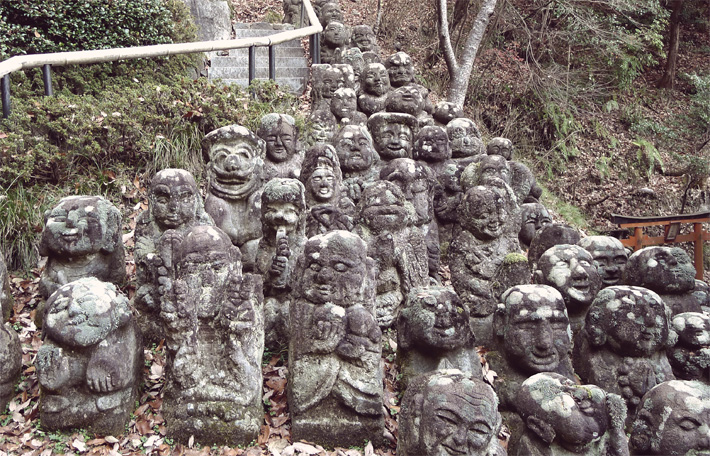
*If you're on the 1-week plan, skip day 8 and go to Nara instead.
Kyoto's going to be your shrine and temple time while visiting Japan. Since it was the place where the emperor lived for over a thousand years, it's full of cool, historical things. Take your pick and enjoy. Also be sure to just walk around at random. You'll run into so many temple, castles, and shrines just by accident. It doesn't hurt to explore, some. Oh, and bring your walking shoes. Things are about to get… walky.
Central Kyoto
Nijo Castle: This was where Tokugawa Ieyasu lived (remember his shrine, up above?). Later it switched to an imperial palace (after the Shogunate went down), and then later opened to the public. It is a UNESCO World Heritage Site, which is supposedly a big deal.
Kyoto Imperial Palace: When the Shogunate was in power, this is where the imperial family lived. You can even take tours in English, here.
Northern Kyoto
Kinkakuji: Also known as the golden pavilion, this is a building covered in gold .
Western Kyoto
Kokedera: Also known as Saihoji, this is another UNESCO World Heritage Site (way to go, Kyoto). This temple is mainly known for its moss, and apparently has over 120 different varieties.
Southern Kyoto
Fushimi Inari Shrine: This shrine is known for its thousand torii gates. They're bright orange and absolutely incredible to walk through. Highly recommended.
Eastern Kyoto

Kiyomizudera: One of the must sees, I think (and also a UNESCO World Heritage Site). This temple is high up on a hill and has a balcony that offers an awesome view.
Higashiyama District: You'll run into this on your way up to Kiyomizudera, actually. Think of this area as a "historic shopping district." Kind of touristy, but a lot of fun nonetheless. Grab something to take home!
Sanjusangendo: The building itself it's amazing, but the inside is pretty remarkable. There are 1001 statues of Kannon in here, which is… well… kinda remarkable.
Gion: Like Geisha? this is Kyoto's Geisha District. You will have to try pretty hard to get in to see a geiko, though, but good luck trying (hint: apparently some travel agencies will hook you up if you've got the yen).
Day 9: Nara
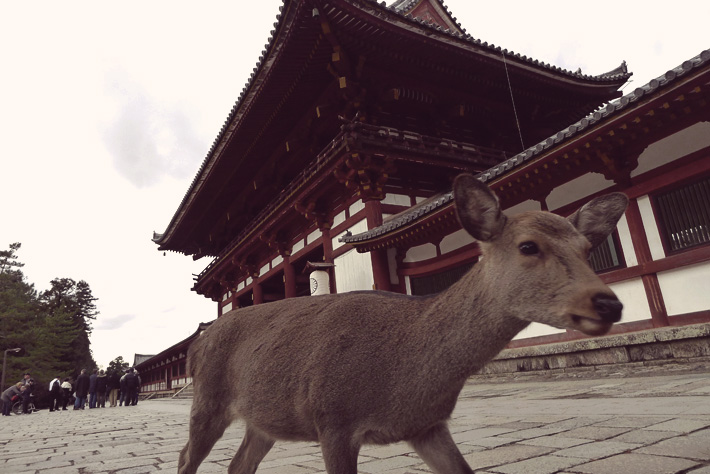
You can leave the morning of Day 9 or leave the evening of Day 10 and spend the night in Nara. Either is fine. You can even spend the night in Nara on Day 9 as well then move on early in the morning of Day 10. It all depends on how much you like temples and Deer.
While there's some neat temples, shrines, castles, and other similar things here in Nara, I'd say you're coming for deer. The deer here are pretty tame and will actually attack you if you have food (kinda fun to run from deer). Don't worry, they have their horns cut off, though (it's a religious thing), so you won't be stabbed through, most likely.
Places you'll want to go in Nara:
- Todaiji Temple: Largest wooden structure in the world with Japan's largest Buddha statues inside. Basically, think super sized. Definitely one of the best places to visit in Nara.
- Nara Park: Has a lot of deer. Go buy deer food, the deer will thank you.
- Kofukuji Temple: Basically a big temple. Very pretty, though.
- Nara National Museum: If you're interested in Japanese Buddhist Art, this will be a fun place for you. The building is also surrounded by ferocious, wild deer.
Consider this a day to walk around but not as much as when you were in Kyoto. Nara's a lot like Kyoto in a lot of ways, though, so I'd recommend mainly hitting up the deer and then hitting up Todaiji Temple. Depending on how worn out you are on temples, though, you can stay here longer or shorter, deciding where you stay this night based off of that.
Day 10: Mt. Koya aka Koyasan
You'll want to make sure you leave early this day, whether you're leaving from Kyoto or Nara. You have a ways to go to get to Koya-san, quite possibly one of the most beautiful places in Japan (just my opinion). This might be one of the best places you go in your Japan travels.
There are a hundred temples here, many of which you can stay the night at. When you spend the night, you get the best vegetarian meal you've ever had (guaranteed), a room to stay in, and even the option to wake up (really) early to go watch the monks do their morning rituals. It's so peaceful, a lot of fun, and one of my favorite places on earth. You'll want to go to the Koyasan website for more information on lodging.
I'd recommend getting here as early as you can on Day 10, dropping off your things at the place you're staying, then just walk around. You'll be able to fill a good amount of time just exploring. The best place to walk, though? Probably the giant cemetery, which also happens to be the largest in Japan. Although some may find a graveyard creepy, it really is quite peaceful.
This, I think, will be one of your best days in Japan, so don't skimp out on it if possible! Just be sure to get back to your temple in time for dinner.
Day 11: Travel Day / Osaka / Fuji

*If you're on the 1-week schedule, you'll need to get back to Tokyo. You're running out of days.
Day 11 is mostly travel. You'll want to leave Koya either late morning or early afternoon, depending on where you're going next. If you like shopping a lot, you'll want to get back to Tokyo on this day.
If you don't need the extra time, consider stopping in Osaka (it's on the way from Koyasan). You can visit the Glico Man, Osaka Tower, play some Pachinko, and eat some Takoyaki / Okonomiyaki (both famous in Osaka). It's a bit different than Tokyo, but it's still a big city. I'll leave this one up to you, though. Osaka's a lot of fun to just walk around and check out.
Alternatively, you could stop at Mt. Fuji on the way back too. I recommend the amusement park Fuji-Q Highland over climbing the mountain itself (it looks better from afar, you'll have to trust me on this one) if you do this. Definitely don't miss the horror house there, it's top notch.
Whatever you end up doing, you're reaching the end of your trip. Just make sure you're back in Tokyo in time to do your shopping before you get on the airplane to leave. Of course, if you don't shop, then you have more time to go to more places. If you do shop, get back to Tokyo.
Day 12 & 13: Shopping In Tokyo / Last Minute Visits

Hopefully you scoped out all the places you wanted to shop at, because this is your shopping time. Get the things you want for yourself and for your friends / relatives. Fill up that duffel bag you brought / bought and have fun. This is also a good time to just go around to the places you missed.
Either way, it's good to be back in Tokyo a day or two before your flight leaves, that way you won't miss your flight (unless you want to "accidentally" miss it, wink wink nudge nudge).
Day 14: Go Home
Hope you had traveling to Japan. This is only your first trip, though. Now that you've gotten all the normal / main stuff out of the way, your next trip can be filled with strange, exciting places. Be sure to check out TofuguTV for some of those, and keep reading Tofugu for more in the future. There are certainly many, many "off-the-beaten-track" locations worth visiting, but we'll save that for next time !

My transformative first trip to Japan · Part 1
11 min read December 9, 2021 #Photoessays #Japan
This part one of a four part series.
Six years ago, I sat on a bench in the international terminal at SFO, my eyes gazing at an Asiana Boeing 777. It was to be my home for the next half-day as we flew to Seoul Incheon Airport. The anticipation that had built up over the preceding months was overflowing. I could feel the adrenaline running through my veins, the jitteriness leading me to shake my leg.
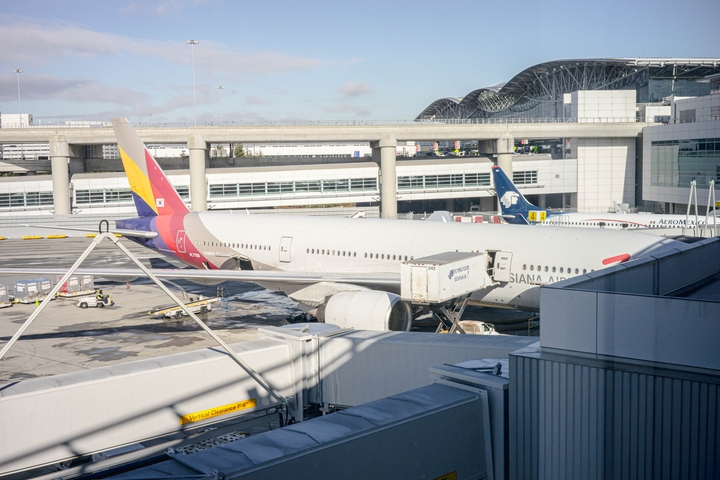
Once we finally passed the doors into one of the floors, I got my first taste of the convention. Comiket is centered around Doujinshi or self-published Manga.
I looked around, and almost everything was erotic in nature. I was a bit surprised, but I decided to stick it out and see what else I could find. Fortunately, I stumbled upon an all-ages section of beautiful art and how-to books on everything from gardening to electronics.
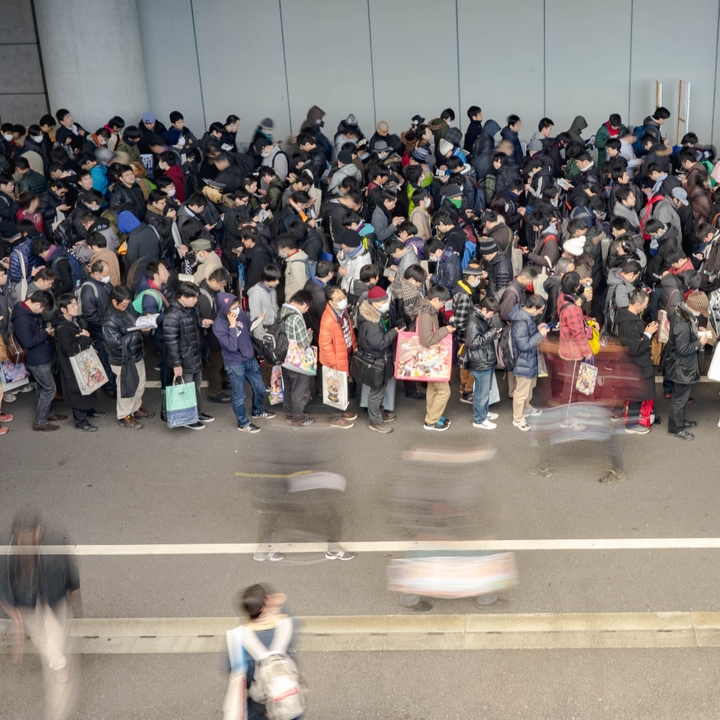
A complete 7 day itinerary for Japan
Japan is a country I have long wanted to visit, with incredible mountain scenery, one of the world’s most chaotic & quirky cities (Tokyo), a long history of culture & tradition, and of course incredible cuisine with authentic sushi on offer everywhere you turn.
I have been asked many times over the past few years of blogging why I have not yet been to Japan, with the answer being that I was just waiting for a time that was right. This is a country I wanted to see as a whole over at least 2 weeks, instead of just flying in for a quick city trip to Tokyo or a ski trip in one of Japan’s famous ski resorts.
When I came across the Splendours of Japan Tour with Trafalgar (who I have travelled with previously in Peru ), it seemed like a great opportunity to take one of my parents overseas to visit Japan, as I knew either of them would appreciate the culture and history unlike anyone else I knew – so I booked my dad a plane ticket, told him to pack his bags, and we were off!
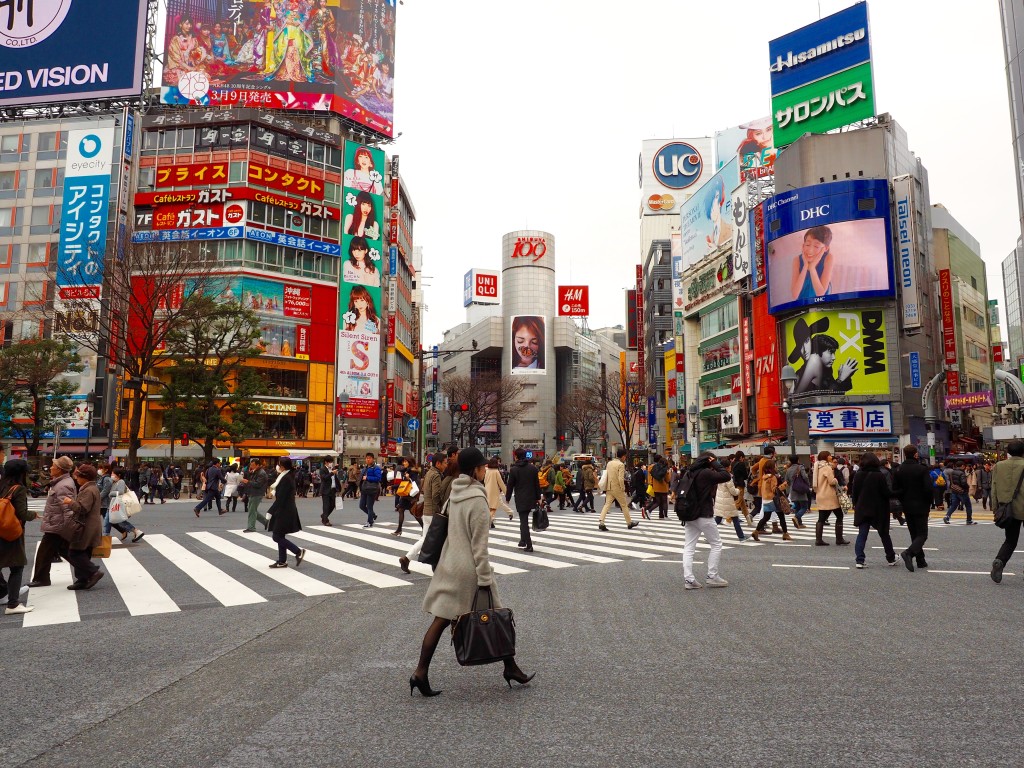
My Trip to Japan: Tokyo
Japan’s capital Tokyo is weird, wonderful, and at time completely whacky – but that is precisely what makes it such a sought after city for international visitors.
Our trip started in Tokyo as it is the main gateway to Japan and a great city to spend a few days discovering its many pockets – from the hustle and bustle of Shibuya & Shinjuku, over to the quiet peace and serenity of Japan’s public parks, and all the way through to Tokyo’s gaming district; Akihabara.
Be sure to allow yourself at least 3-5 days in this city as there is much to see and do – including tourist hot spots like the Mieji Shrine; Sensō-ji temple; Ueno Park for remarkable cherry blossom viewing in Spring; Harajuku for young fashion, nearby Omotesando for grown-up fashion, Tokyo Tower for impressive views at sunset, and if you have more time, day trips to Tokyo Disneyland, Disney Sea, or nearby Mt. Fuji.
For our Tokyo hotel we stayed at New Hotel Otani and I would highly recommend it, though for location I would have preferred to be position in Shibuya or Shinjuku.
Further reading:
A Quick Guide to Tokyo
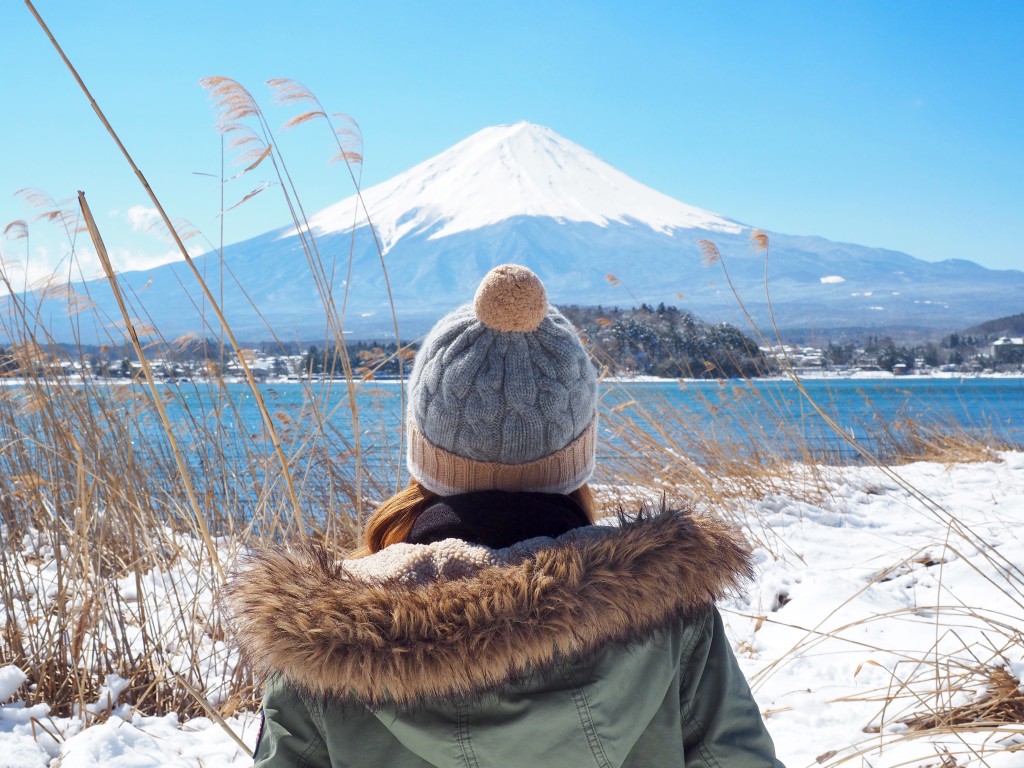
Mt. Fuji Day Trip
After enjoying all of the chaos and craziness that is Tokyo, allow yourself one day to get out of the hustle and bustle and escape to nearby Mt. Fuji to view the impressive mountain where many Japanese and foreign guests make their climb to the summit each year.
Whilst here enjoy great views (weather dependent) from Lake Kawaguchi and enjoy a delightful blueberry + vanilla soft serve from the gift store.
Onwards from Mt. Fuji we proceeded to visit Hakone, a small village on lake Ashi, which also offers great views of Mt. Fuji from afar by taking the cable car to the viewing platform.
Further Reading:
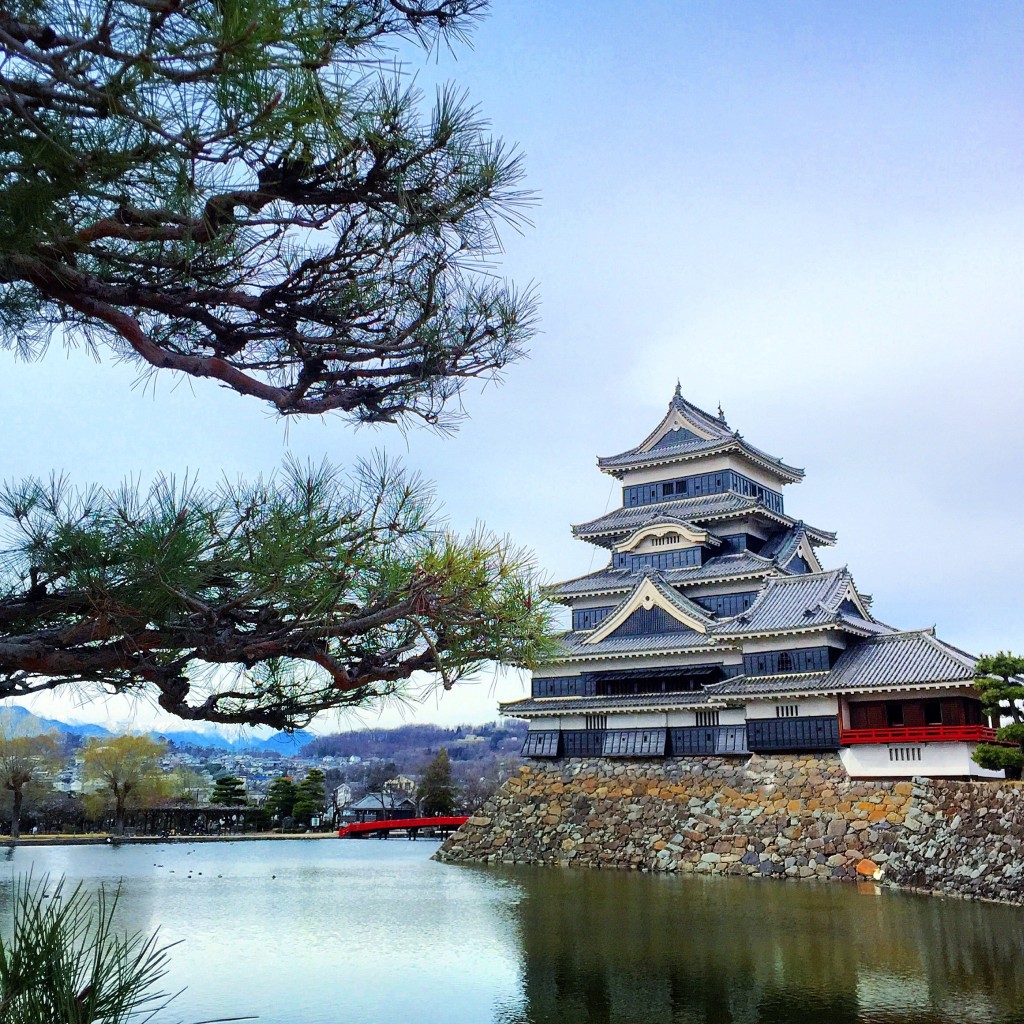
Matsumoto Castle (En route to Takayama)
After 3 nights in Tokyo (I would suggest booking at least 1-2 more nights to allow time to see/do everything in Tokyo), we made our way by bus to Takayama via Matsumoto Castle – one of Japan’s most picturesque castle. Also known as crow’s castle due to its black exterior, this castle is entirely built of wood and as per Japanese tradition, built completely without nails (it pieces together like a jigsaw puzzle and can be entirely pulled apart and put back together).
There isn’t a great deal to see beyond the castle, so after a quick look inside and walk around the grounds, it was onwards to Takayama in the same day!
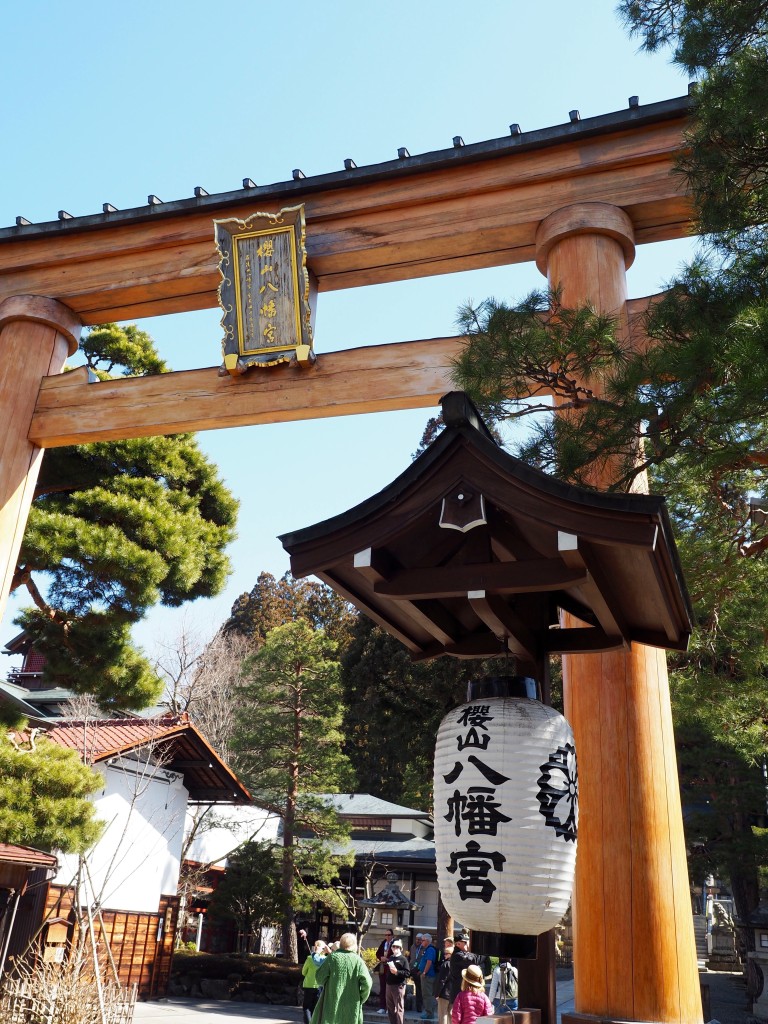
This gorgeous little city known as Takayama is the gateway to the Hida region. One day to explore this city is enough time to see most points of interest, though if time is on your side this would be a great town to slow down and spend a couple days immersed in Japanese culture and traditions.
Soft serve ice cream plays a big role in Takayama with many flavours available on the many street – don’t be afraid to try them all! There are also some great Izakaya restaurants here (casual Japanese food), offering a great chance to try regional food.
For our hotel in Takayama we stayed at the three-star Hida Plaza Hotel . I wouldn’t particularly recommend it and I believe Takayama is a great location to try a traditional Ryokan whilst in Japan.
A Quick Guide to Takayama
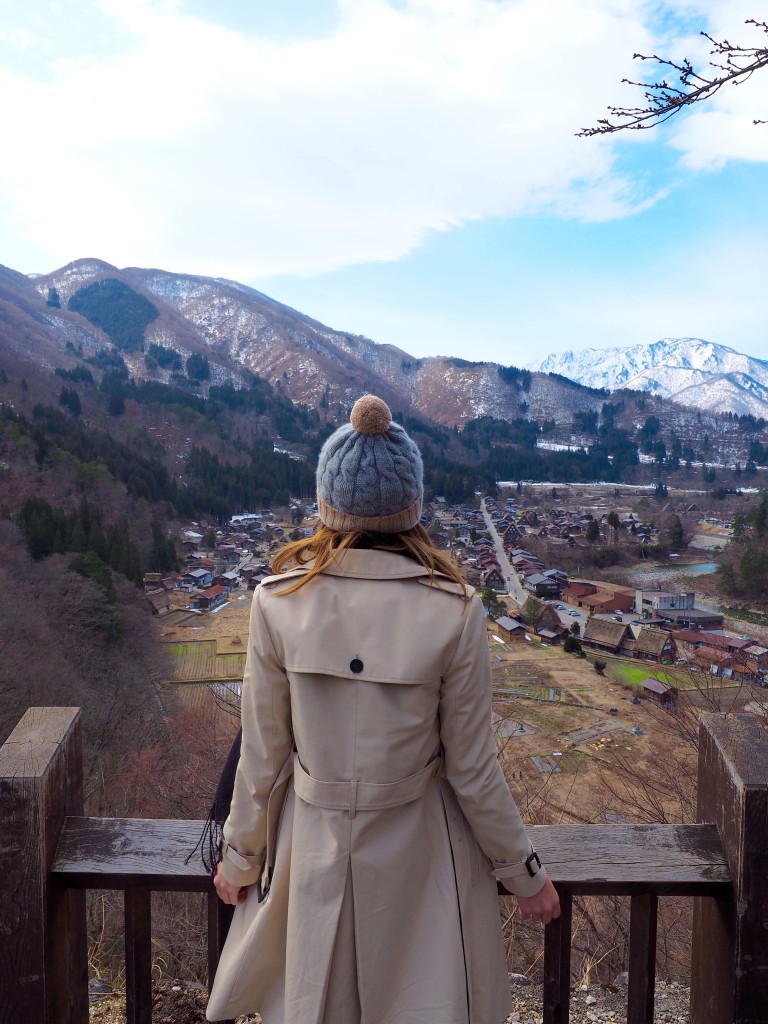
Gokoyama & Shirakawago
After two nights in Takayama, we made our way through countryside villages toward the busy city of Kanazawa – but as is often the case, today was all about the journey to get there.
En route we stopped at two traditional villages – characterised by thatched roofs and traditional wooden houses. These two villages are UNESCO World Heritage listed as they portray Japanese traditional in its truest form – so be sure to take plenty of photos!
Onwards we stopped at a Nomura House, a traditional samurai house where we learned the history of the local region, ongoing traditions and the history of the samurai.
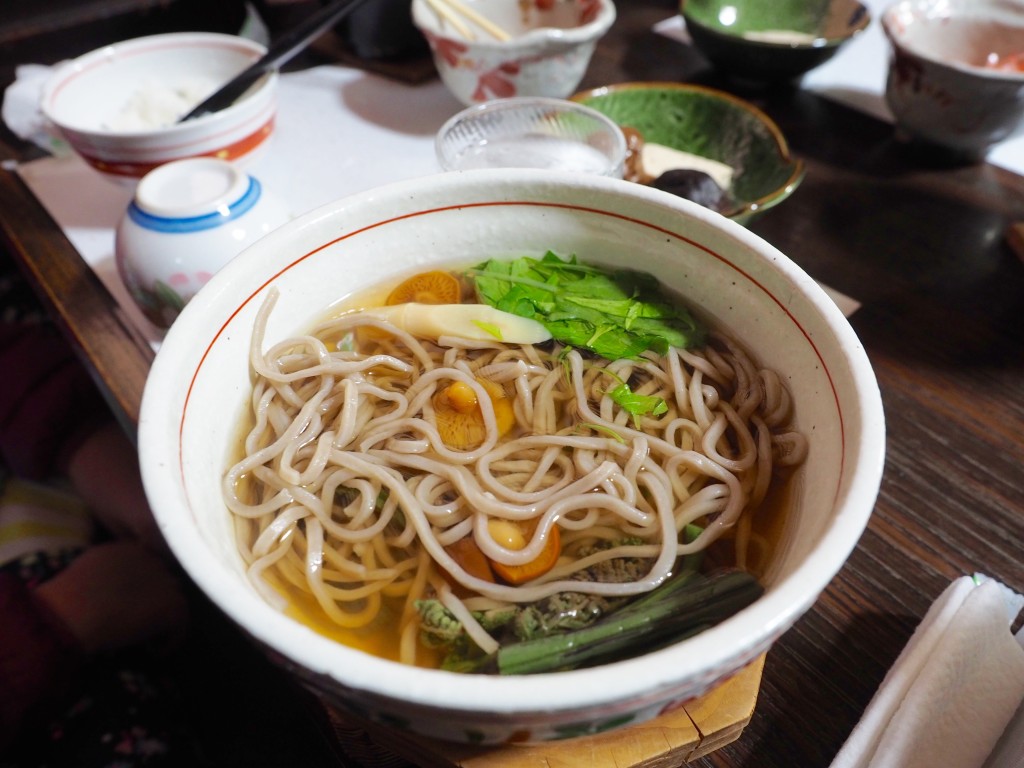
Sadly I have only a couple of rainy, not-so-clear photos to show from our time in Kanazawa, as we experience rained for the two days we were though and thus mostly stayed indoors.
Should you be received in Kanazawa with sunshine, be sure to visit Kenroku-en, regarded as one of Japan’s three most beautiful gardens and just next door is Kanazawa castle, which is also worthy of a visit.
Kanazawa is a larger city (with multiple Starbucks and McDonalds if that gives any indication!), so I would recommend just one day to explore here, to allow for more time in the countryside or cities that have more to offer in terms of sightseeing and culture – like the next stop; Kyoto!
For our hotel in Kanazawa we stayed at the Kanazawa Tokyu Hotel , which I would highly recommend for both location & a fantastic buffet breakfast!
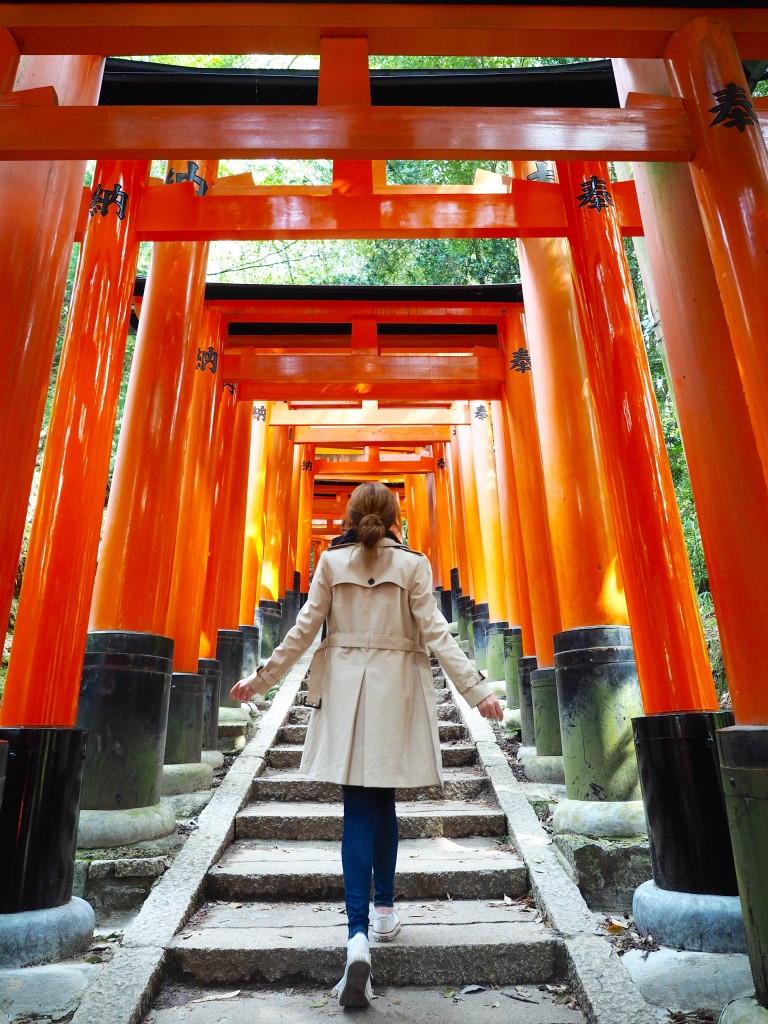
Once the capital of Japan, Kyoto is as idyllic as one could ever imagine Japan to be. Although the charm of Kyoto lies beneath the bustling city that it is today, when you take the back streets you soon begin to discover the history, culture and traditions that live on in Japan to this day.
Be sure to wander through Gion, Kyoto’s most renowned Geisha district and an absolute mecca for green tea (matcha) lovers! Here green tea comes in any and all forms – ice cream, parfaits, frappes, hot lattes and more!
Kyoto is also home to the famous Fushimi Inari Taira – an incredible shrine of thousands of red torii gates that line the 4 kilometre stretch to the sacred Mt. Inari. Nature lovers will enjoy the bamboo groves, whilst those looking for a city escape can always make a quick trip to Osaka – just a 30 minute express train ride away!
For our hotel in Kyoto we stayed at the Hotel Nikko Princess which I would highly recommend due to the large rooms, amazing service (particularly from the concierge), great location and a great breakfast buffet.
A Quick Guide to Kyoto
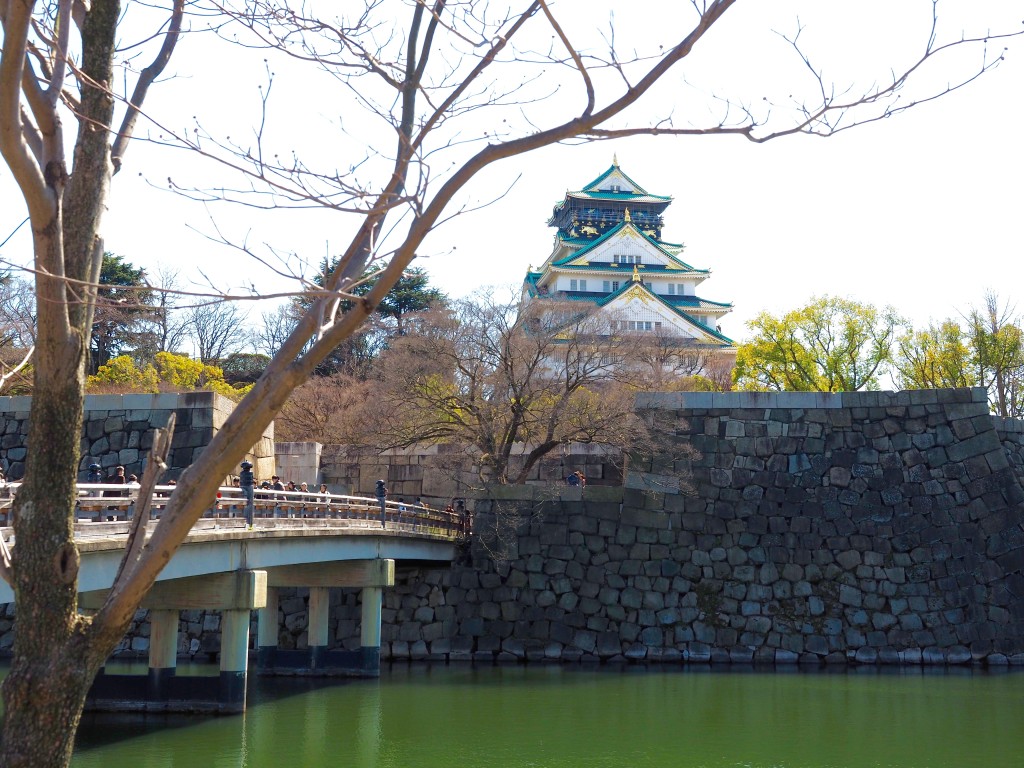
Although Osaka wasn’t on our itinerary for the tour, we had an extended stay at the end in Kyoto, which allowed for a spontaneous trip to nearby Osaka (30 minutes by express train from Kyoto). The trip happened completely by chance, as we were sat in our hotel room making a plan for the following two days, deciding when would be best to visit each location for less crowds, particularly as it was a public holiday that day. All of a sudden we made the decision to head out of Kyoto to nearby Osaka and experience the hustle and bustle of now my absolute favourite city in Japan.
My favourite areas to explore in Osaka were Shinsekai and Dotonbori. Shinsekai felt like a time warp as you quite literally step back in time to a Japan that time forgot, but of course with the added colour and livelihood of the 21st Century! Dotonbori is the main tourist thoroughfare in Osaka which is also home to the best street food in Osaka (and some of the best in Japan), whilst allowing plenty of opportunities to spend some cash.
A Quick Guide to Osaka
World of Wanderlust experience the Splendours of Japan Tour as a guest, however my opinions and oodles of photos are all my own!
Brooke Saward founded World of Wanderlust as a place to share inspiration from her travels and to inspire others to see our world. She now divides her time between adventures abroad and adventures in the kitchen, with a particular weakness for French pastries.
Find me on: Twitter | Instagram | Facebook
Incredible places would be great for students to visit in their winter vacations. Students will get to learn many things about these places.
*early next year
Hi Brooke! I love your Japan travel blog! Planning to go there early next week. Btw, may I ask what camera do you use? Your photos are fantastic!
Great post, japan is so calming even though i haven’t been there by reading your post i feels like i was also there. hope i can visit there soon and try alot of ramen, thankyou!
Great blog! Thanks for sharing informative and complete japan itinerary.
Japan always make me dream…and you made that too with your post and pictures!! I really can’t wait for restrictions to go away, the first place i’m gonna visit are Gokoyama e Shirakawago for sure!

Los Angeles
Plan a trip
First trip solo
Packing guide
20 Best Places for Solo Female Travel
Travel after a break up
20 Places in your 20’s
WAYS TO TRAVEL
Solo travel
Adventure travel
Luxury travel
Learn a language
Become a blogger
- Tours & Experiences
- Tailor-made Trips
- Bahasa Indonesia
We are happy to see you again!
Continue with
Or use email.
No Account? Create one
Create account
Already have an account? Sign in
Quickly Sign up with
I agree to Japan Travel's Terms of Service and Privacy Policy . Terms of--> and acknowledge that Japan Travel's Privacy--> applies to me.-->
Email reset password link
Please check your inbox and click the link we will send to you.
9 Tips for Your First Trip to Japan
Rail passes, airport choices, accommodation info, & more

Traveling somewhere new comes with a wide mix of emotions – there's often excitement and anticipation of what's to come, combined with some trepidation or anxiousness about being in a completely different country.
Often, that trepidation or anxiety can be eased when you know what to expect, so we've put together a beginners guide to Japan. The goal of this compilation is to answer some of the questions we regularly receive via our social media channels, plus some things our own staff would have liked to know when they first came to Japan!
Where to fly into?
One of the first things to consider when heading to Japan is where you'll be flying into. Many first timers opt to head to Tokyo, which is served by two international airports – Haneda (HND) and Narita (NRT). Something that visitors aren't often aware of is the difference in distance between them. Haneda is located under 20 kilometers from popular tourist areas like Shinjuku and Shibuya, whereas Narita is located in Chiba Prefecture about 80 kilometers away from the heart of Tokyo. Factor this in when you book your flights!
Transport Tips
A question we receive quite regularly is "should I get a JR Rail Pass or not?", and the answer really comes down to how much ground you plan on covering. At the time of writing, the price of a 7 day rail pass is close to 30,000 JPY, and the 14 day pass is just over 47,000 JPY. When you compare the price to a one-way ticket from Tokyo to Kyoto at 13,320 JPY for an unreserved seat, you can see that the pass pays for itself fairly quickly if you're chalking up some kilometers.
If you're basing your stay in Tokyo, one economical way to get around is the Tokyo Metro one-day pass. Priced at ¥600 for adults and ¥300 for children, the pass includes unlimited rides on Tokyo Metro lines for 24 hours from its first use. The passes can be purchased in advance or on the day, with on the day tickets available via ticket machines at all Tokyo Metro stations.
Getting yourself a PASMO or Suica card is another good option if you're predominantly staying in the one locale. These tap-and-go electronic money cards can be used on train and bus networks, plus they can be used as a means of payment at convenience stores, many vending machines, and even some retail outlets. You can find more information about PASMO cards here, and more information about Suica cards here.
Something to note when you disembark at a train station is which exit you should head out from. Many stations have numerous exits, and heading out the wrong one can put you on the opposite side of where you need to be. We recommend checking a map before randomly picking any exit, so you can be closest to your intended destination.
Some people opt to rent a car for their Japan travels, and this guide on our site covers some of the basics you need to know if you're intending to do that. It's also helpful to know how to fuel up a vehicle, and we've got an instruction guide for that here.
Cash or Card?
Unlike some destinations, Japan still has many stores and restaurants that don't offer card payment facilities. Because of this, it's useful to keep some cash on you to avoid being caught out.
While on the topic of cash, Japan doesn't have a culture or custom of tipping. If you do leave cash on a cafe or restaurant table as a tip, it's likely you'll have a staff member chase you down the street to return your money!
Which accommodation option to choose?
Accommodation options in Japan run the gamut, from size to price. Some types to consider include:
- Capsule Hotels: these are small, pod-like structures that basically fit a bed mattress and not much else. At these hotels, bathroom facilities are communal, so keep that in mind if you would prefer more privacy. Capsule hotels can be a great option for solo travelers on a budget, and there are capsule hotel chains who offer male-only or female-only lodging if you would prefer that.
- Business Hotels: There are several different business hotel chains in Japan, including the likes of APA, Route Inn, and Dormy Inn to name just a few. They are typically small in size but clean and conveniently located near stations to cater to their business clientele.
- Love Hotels: Despite their reputation for being places for some *ahem* quality time, love hotels can serve as an inexpensive, clean, and convenient place to stay. Many love hotels offer automated self check-in and check-out options, which is great if you intend to arrive or leave outside standard hours. Some also have quirky decor themes which can be fun if you're looking for something unique.
- Minshuku: Often referred to as Japan's bed and breakfast option, minshuku are a way to enjoy an authentic Japanese experience with your stay. Something to note about minshuku is that it's common for bathroom facilities to be shared between others staying there, so be sure to check when booking if this is something that would bother you.
- International Hotel Chains: There are also numerous international hotel chains to choose from, including the likes of Hilton, Marriott, and Westin to name just a few. If you're after familiarity when it comes to your accommodation, these chains can be a good option.
- Ryokan: these are traditional Japanese inns, and usually come with meals (primarily breakfast and dinner) included with the room rate. If you have allergies or intolerances, it's recommended to advise your ryokan of this ahead of time so they can work to accommodate your preferences.
Best time of year to visit
It's important to mention that the best time of year is going to be different for everyone based on their own personal interests. For instance, one person may hate the cold, another may adore skiing and snowboarding – so winter might be great for one traveler and not so much for others!
Weather-wise, two of the most pleasant times of year to visit are spring and autumn. They're also two times of year with some stunning natural beauty to enjoy in the form of cherry blossoms and changing leaves respectively.
Something to keep in mind when planning your visit is Japan's schedule of national holidays. One time of year that can present challenges for travelers is Golden Week, a string of public holidays running from April 29th until May 5th annually. During this period, many people travel to visit family or plan their own getaways, meaning that roads are congested, trains and flights are often booked well in advance, and accommodation options are often more expensive during this peak timeframe.
What does Japan think about ink? Long story short, tattoos have associations with yakuza (organized crime syndicate members) here, and tattoos are often still prohibited at places like onsen (hot springs), water parks, and even some public beaches.
If you do have tattoos, there are a couple of options. First, if your tattoos are small, some people opt to cover them with waterproof band-aids and try their luck. A safer approach is to visit places that have a more open mindset regarding tattoos, and using a website like Tattoo Friendly Japan to help narrow down those destinations is useful.
If you are particularly enthusiastic about visiting an onsen, opting for a private one can be a stress-free approach with respect to both tattoos and then idea of being naked around a bunch of strangers – the latter is quite an adjustment for visitors from certain countries.
What to do if you're an early riser
One thing becomes apparent in Japan very quickly – many places (cafes, restaurants, supermarkets) don't open until 10am or later. This is where convenience stores come in handy! Three of the major convenience store chains here are 7-11, Lawson, and Family Mart, and they're places where you can grab a morning coffee or tea, full meals and snacks, toiletries, and plenty more.
Once you're fueled up for the day, temples, shrines, and parks are good options to explore bright and early. These places are often open 24 hours (although not in all cases, so be sure to Google your intended destination to double check!) and can provide a serene and culture-filled start to your morning.
Helpful apps and websites
With most of us traveling with smartphones in our pockets, downloading a few apps ahead of time can be particularly handy. Some that we'd recommend include:
- Google Maps – a must for getting from A to B, pinning spots you'd like to visit, and even working out which trains to catch. Pop your departing station and arriving station into the app, tap the transit icon, and voilà – you've got the routes right in front of you.
- Google Translate – this comes in super handy for things like deciphering restaurant menus or being able to ask someone for help if you don't speak Japanese. If you download the offline version ahead of time you'll still be able to translate things without an internet connection.
- Gurunavi – this website makes picking somewhere to eat a breeze. You can filter by the area you're visiting and the type of cuisine you're seeking, and it will provide a variety of results. There is also an app version, but at the time of writing it is only available in Japanese.
- Halal Friendly Japan – if you're Muslim and looking for halal eateries during your visit, download Halal Friendly Japan. The app helps you find halal restaurants and cafes based on your destination.
- Happy Cow – This website (also available in app form) is useful for vegan and vegetarian travelers looking for plant-based places to eat.
Staying connected on your visit
Another regular question we get asked is how to stay connected during your travels. There are two main options – SIM cards or portable WiFi devices – and there are several companies that provide those services. For sim cards, Mobal is one convenient choice, and they offer various plan lengths with different features.
Portable WiFi is another popular way to stay online, and there are numerous companies that offer these devices. Checking the website of the airport you're flying into can be helpful in establishing where to find either SIM card providers or portable WiFi devices, for instance:
- Tokyo Haneda SIM + Portable Wifi Services
- Tokyo Narita SIM + Portable Wifi Services
- Kansai Airport SIM + Portable Wifi Services
- Share on Facebook
- Share on Twitter
- Copy link to share
Japan Travel Staff
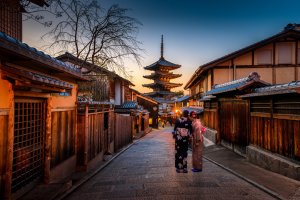
Top Articles
- Recommended

Sapporo Beer Opens New Brewery in Tokyo’s Ebisu

Valley of Witches: a New Ghibli Park Attraction

Tokyo One of the World's Most Walkable Cities

2024 Grand Sumo Tournaments

Mount Omuro

Extraordinary Experiences in the Great Nature of Izu-Oshima, the Closest Island From Central Tokyo

Kurobe Unazuki Canyon Route to Link with Tateyama Kurobe Alpine Route

2-Day Hachijojima Retreat: Recharge Your Mind and Body

Tokyo Takes 2nd Place on Top Coffee Cities List

Guide to Bringing Medicines Into Japan

Your Name: Real-Life Locations in Tokyo


Hachiko Statue in Shibuya

Iwatayama Monkey Park

Shibuya Crossing

Daikoku Car Meet

Kanamara Penis Festival

Guide to PASMO Cards

Guide to Suica Cards

Japanese Urban Legends
More from this category, guide to bringing medicines into...
By Japan Travel

Money in Japan
By Tom Roseveare

Guide to Earthquakes in Japan
By Edward Yagisawa

Getting a Tattoo in Japan
By Serena Ogawa
Join the discussion

Let us know how we can help.
Help us improve JapanTravel.com
We welcome any suggestions regarding this content. Your feedback is confidential and will be used to help improve this page.
Suggest an edit
https://en.japantravel.com/guide/9-tips-for-your-first-trip-to-japan/69353
Thank you for your support!
Your feedback has been sent.

What to Expect on Your First Trip to Japan- A First Time Visitor’s Guide
Purchases made through links earn us a small commission, at no extra cost to you.
It’s hard not to love Japan. Beautiful and evocative, Japan awakens your imagination and captures your heart.
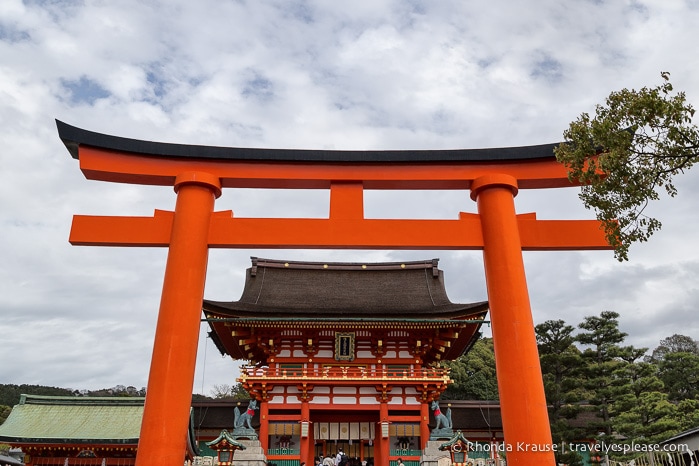
Japan is a nation that’s not afraid of innovation and progress, yet is passionately protective and proud of its culture. Temples, shrines, peaceful gardens and traditional customs, co-exist with towering skyscrapers, futuristic architecture, speeding bullet trains and a quirky pop culture.
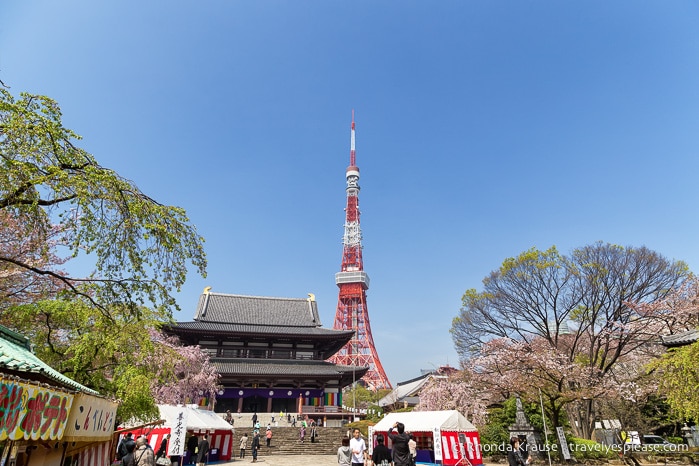
Japan is contradictory, yet harmonious. Overwhelming, yet calming. Japan is a country of contrasts.
On our first trip to Japan, we instantly fell in love. Japan quickly climbed the ranks as one of our favourite countries. I hold close many fond memories of travelling in Japan and hope that one day I will return to experience more of Japan’s beautiful places and culture.
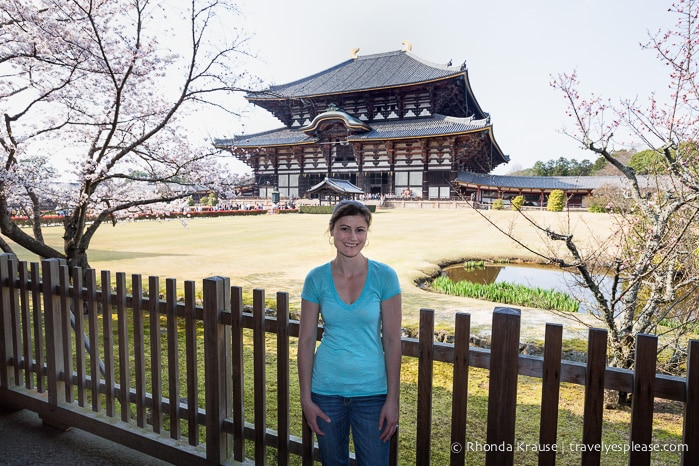
What to Expect on Your First Trip to Japan
When I was planning our trip to Japan, I was stressed. I found everything to be a little confusing, especially the train system. I tried to get as much information as possible so that we would have a smooth first trip to Japan.
As agonizing as it was, my hours of research paid off. We arrived in Japan confident and capable, aware of what cultural differences to expect. Of course, there were things we learned along the way, but it really calmed our nerves to have a base understanding of what to expect for our first trip to Japan.
To help ease any fears you might have about travelling to Japan for the first time, here are some tips and observations from our first trip to Japan.
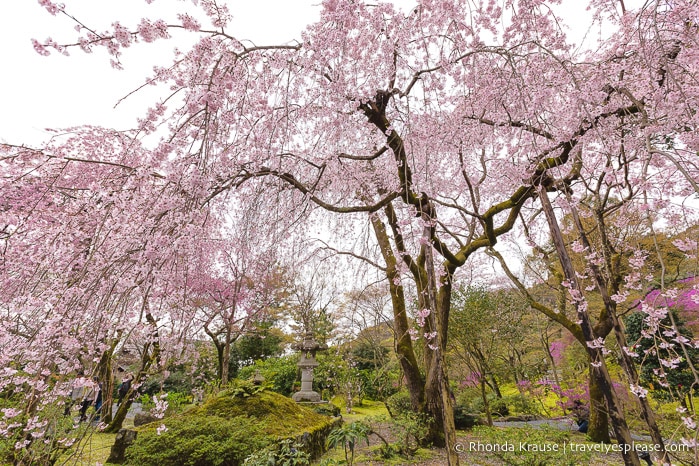
- It goes without saying that Japanese is the predominate language in Japan. English is taught in schools, so some people we met were interested in conversing with us to practice their skills. Still, many Japanese people are not comfortable with everyday, spoken English.
- We found that English was not spoken in smaller towns that don’t receive a lot of Western tourists. Some locals would use a translation feature on their cell phone to communicate with us. They would type their message and then translate the text to English.
- In large tourist centres, like Tokyo and Kyoto, English was more common. Hotel staff, and some restaurant staff, spoke pretty good English. Other times, English words were pronounced as if they were Japanese, making it hard for us to understand.
- Most important signs (in train stations, subway stations, major road signs etc.) were in both English and Japanese. My biggest worry was not being able to read the destination signs at train stations, but luckily this was never an issue and we always knew where to get off!
- Even with the language barrier, the Japanese people were always very polite and willing to try and help us out when needed.
Survival Tips
- Try and master a few basic phrases and polite greetings. An attempt at even the most basic Japanese will be appreciated.
- My Tourist’s Language Handbook (from the Japan National Tourism Organization Canadian Office) came in handy a few times. I could find the English phrase in my book and point to the Japanese translation underneath. The Google Translate app is also an invaluable tool.
- It really helped to have our hotel names and addresses written in Japanese. All our hotel booking confirmations from Booking.com had Japanese translations, so I would just hand the paper to the cab drivers and they would know where to go.
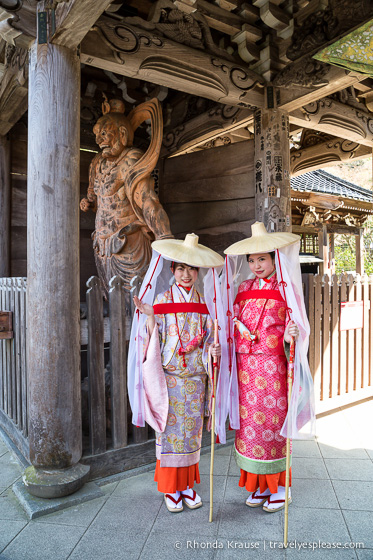
Transportation in Japan
Travelling by train in japan.
- Japan has a very comprehensive, reliable and efficient rail network. Japan Railways Group (JR) is the main operator but there are also many private railroads linking smaller communities.
- There are many categories of trains, differentiated by how many stations they stop at along the way.
- Tickets can be purchased from machines in the station but we found it easier to buy from the ticket counter.
- A Japan Rail Pass is a good option if you will be doing a lot of travelling around the country. You can choose from a 7 day, 14 day, or 21 day pass. It seems expensive to buy at first but can work out to be good deal, depending on the specific train trips you make. You must buy a JR exchange order from an authorized Rail Pass agent before coming to Japan, and must be visiting on a Tourist Visa (T emporary Visitor entry status ). Use this page to help you find a sales office or more conveniently, purchase your JR exchange order online and have it shipped to you. When you get to Japan, you exchange the voucher for the actual JR Rail Pass. Read our Guide to Buying and Using the Japan Rail Pass for more information.
Using the Subway in Tokyo
- The only city we used the subway in was Tokyo. It’s a massive network with numerous lines, but the signage and colour-coded maps made it very easy to use.
- Tokyo’s subway is operated by two different companies. Nine lines belong to Tokyo Metro, and four are operated by Toei. It’s important to note which group you will be using, as they require separate tickets.
- The ticket machines in Tokyo had an English option, making it easy to purchase tickets. You can buy single fare tickets or choose from a few day pass options. The machines accept coins and bills and fares are determined by how far you ride.
- Tokyo’s subway can be very busy and crowded, so be prepared to have to stand shoulder-to-shoulder with other commuters (especially between 8:00 am-9:30 am and 5:00 pm–8:00 pm).
- People are very quiet on subways and trains, even during rush hour when trains are packed to capacity. Refrain from talking loudly and using your cell phone.
- The Japanese make orderly line-ups when waiting for the subway (it’s marked on the platform where the doors will be when the train stops). When the train doors open, people will move aside and stand along the train, making it easy for passengers to get off.
- If you plan on staying out late, note that the whole subway system in Tokyo shuts down around midnight until 5:00 am.
Taking Taxis in Japan
- Overall, we found the cost of taxis to be on par with other cities we’ve used them in. Cabs in Tokyo were the most expensive, starting at ¥710 (about $7 Canadian) for the first 2 km of travel. After that, the metre went up about ¥100 every 350 metres. Rates are higher at night and on the weekends. (NOTE: Prices may have changed since our trip).
- Taxi drivers in Japan will generally not try and scam you. They always took an efficient route and were honest with the meter.
- You can hail a cab from taxi stands in front of train stations or flag one down on the road. It’s a little counter-intuitive, but a red light on the roof or dashboard indicates the taxi is vacant, while a green light means it’s occupied.
- In our experience, most cab drivers didn’t speak much English, so it helped to have the address of where we were going written in Japanese. Both my guidebooks had place names printed in both English and Japanese, so it was easy to just show that to the drivers. I also, would sometimes have to show them our destination on my map.
- Don’t try and open the left rear door, as the driver opens them electronically from the inside.
Renting a Car/Driving in Japan
- To rent a car, you will need to show an International Driving Permit.
- Driving in Japan is on the left-hand side, which was really strange for us at first.
- You cannot turn left on a red light.
- The roads were in good condition, but some you had to pay a toll to use.
- Most people in Japan adhere to the traffic rules, but some like to speed and tailgate.
- All the road signs we came across were in English and Japanese.
- Our rental car came with a GPS, but it wasn’t easy to use. You could change the voice to speak in English, but all the menus remained in Japanese. This made it impossible to browse by points of interest.
- Gas stations were full-serve (just like the good-old days!). The gas station attendants would also go out to the road and stop traffic so that we could leave!
Using Buses in Japan
- I’ve seen two different methods for using local buses in Japan. Some you board from the front and a flat rate fare is deposited into a slot. Others you board from the centre, take a numbered ticket, and pay the fare when disembarking at the front.
- How to use buses that board from the middle: As you get on, take a numbered ticket from the machine at the door. Fares are displayed on a screen at the front of the bus, so look at the number on your ticket and your listed stop to determine how much you need to pay. Drop your exact change and ticket into the box beside the driver as you disembark from the front of the bus.
- Payment by coins is best for local buses. All the buses I used had a machine where you could change ¥1,000 notes only.
- For highway buses in Japan (like the coach-style ones to get to Mt. Fuji and the Fuji Five Lakes ), you can make reservations and pay in advance. Simply show your ticket to the driver.
- Bus depots are usually located outside train station in the cities.
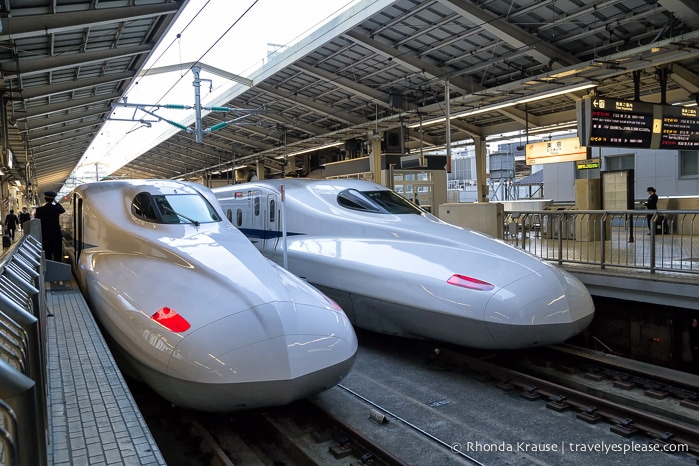
Accommodations in Japan
- There are many different types of accommodations in Japan. If you’re looking for something unique to Japan, try a capsule hotel. For a taste of Japanese culture, temple lodging or a traditional ryokan (our favourite type of accommodation) are the way to go. There are also budget-friendly business hotels, mid-range hotels and deluxe hotels, for those who prefer a little luxury.
- Hotel rooms were Western-style, but very small by North American standards. Plenty of amenities were usually provided including slippers, a robe or pajamas, soap, shampoo, combs and toothbrushes. All our hotels (except for one) had free Wi-Fi available in the rooms.
- Ryokans are traditional Japanese inns. Guestroom floors are covered in tatami mats (made out of straw and rush) and have a low table surrounded by cushions or leg-less chairs. Sleeping is done on a futon mattress, which will be laid out on the floor for you in the evening. Our rooms also had a small, screened-off veranda with armchairs and a table. Some ryokans have communal bathing facilities, while others have private bathrooms in the guestrooms. (Note: Do not wear shoes or slippers on the tatami mats).
- We found accommodations to cost about the same as in Canada. We were paying between $100-$160 Canadian/night (ryokans and temples cost a bit more). Kyoto had the most expensive hotel rates, by far. We paid about $410 Canadian/night (and this was on the low end of what we were seeing online!) I’m sure being there for peak cherry blossom season had something to do with the high prices.
- Quality and affordable accommodations can easily be found near train stations in the cities.
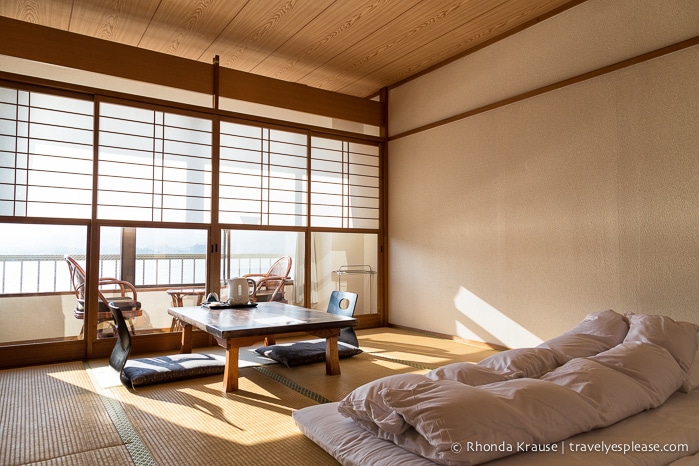
Luggage Storage in Japan
- Hotels will let you store luggage if you arrive before check-in time.
- Train stations have luggage lockers in various sizes. There are fewer large sized lockers, and they cost more, so packing light is recommended. Lockers in stations take coins (usually ¥100 coins only), but some can be paid with IC cards like Suica and Pasmo (rechargeable transportation cards).
- Most urban and long distance trains don’t have significant storage areas for large luggage, just an overhead rack for smaller bags. Larger suitcases can be stored behind the last row of seats in each car. For cars that have a designated luggage storage area, it’s usually just a nook big enough for one or two suitcases. The exception is airport trains like the Narita Express and Tokyo Monorail to Haneda. Unless you’re travelling during high-season or during a holiday, I wouldn’t worry about finding space to keep your luggage on the train. Worst case scenario, you keep it in front of you at your feet (there’s enough leg room on shinkansen to do this, but it wouldn’t be comfortable). It’s worth noting that on my three trips to Japan, I’ve never had trouble finding storage on the train for my suitcase.
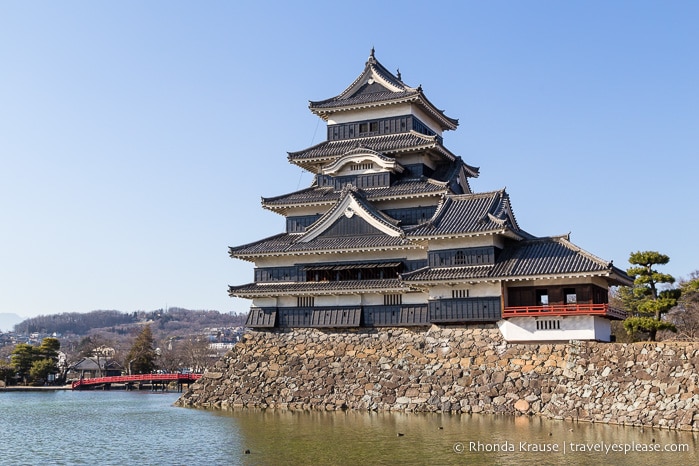
Using Public Baths and Onsen (Hot Springs)
- Japan is very geothermally-active and there are over 2,000 hot spring areas across the country. Communal bathing in these healing waters has been a custom for centuries and is still a popular activity today.
- In most Japanese public baths, bathing is segregated with separate pools for men and women. In smaller establishments, there will be different bathing times for men and women. The segregation is because bathing is done in the nude. It’s considered unclean to have any fabric (such as a swimsuit) touch the water.
- The bathing room consists of three different areas: a room for undressing, a tap/shower area for cleaning yourself, and the pool area.
- Before entering the pool, thoroughly clean yourself at one of the shower stations. There will be low stools to sit on and soap to use. Make sure to completely rinse off any soap before entering the pool.
- You can strategically drape the hand towels across your body as you walk to the pool, but do not let the towel touch the water. Some people would fold up their cloth and put on top of their head while bathing, or just leave it on the edge.
- If you have tattoos you will not be allowed to use onsens, as tattoos are not yet socially accepted in Japan.
- At first I was unsure if I would be comfortable using the public baths, but there was nothing sleazy about it at all.
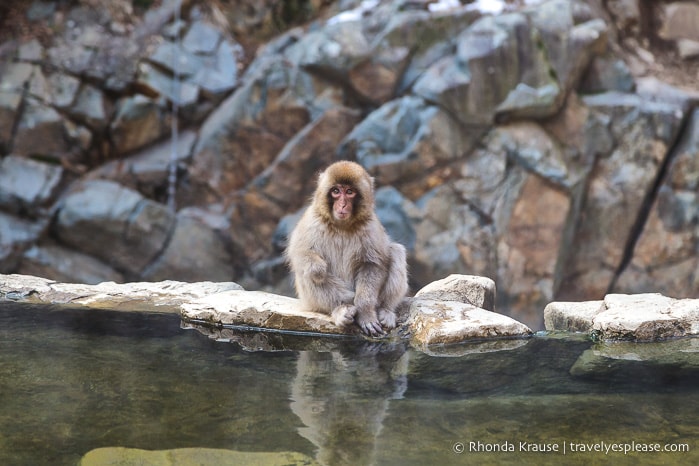
Public Washrooms & Toilets
- There were plenty of public washrooms available to use and most were kept clean.
- Toilets ranged from Japanese squat toilets, to high-tech Western-style toilets.
- The Western-style toilets had a panel of buttons that you could use to select various features. You could play “flushing” noises for privacy, choose from various bidet options and even adjust the temperature of the toilet seat. The heated seats were my favourite feature!
- Some public washrooms had squat toilets. The best way I can describe them, is to say that they look like a urinal built into the floor. To use them, squat over the trough, facing the “hood”.
- Public washrooms may not have soap or paper towels/blow dryer to dry your hands.
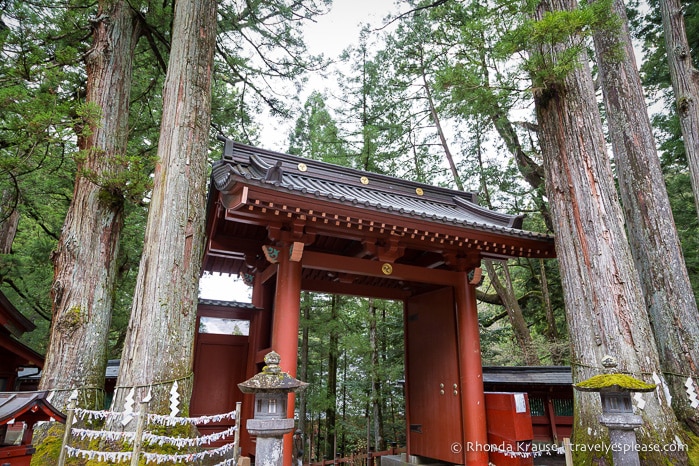
Currency and Banking
- The local currency is the yen. Banknotes come in denominations of 10,000, 5,000, 2,000, and 1,000 notes. Coins come in denominations of 500, 100, 50, 10, 5, and 1. For some reason, the ¥5 didn’t have the numeric value printed on it like the other coins.
- Japan is largely a cash society. We felt weird making small purchases with such big bills, but shops never hand any trouble making change. What we didn’t like though, was having to carry around so many coins!
- Credit cards are accepted at most hotels and restaurants in cities. Some taxis and major train stations accepted them as well.
- Most 7-Eleven convenience stores and post offices had ATMs that accept foreign debit and credit cards. We only had to use an ATM once, but had no issues with it being able to read our card. Check with your bank before you leave to make sure your cards will work overseas.
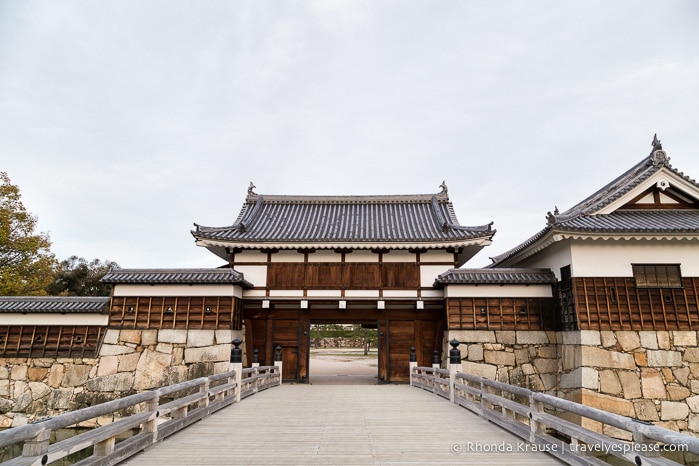
Admission Prices
- Visiting tourist attractions in Japan was quite inexpensive. Most temples and shrines in Japan were free, except for the more famous ones in popular tourist spots.
- Entrance fees to most attractions were under ¥1,000 ($10 Canadian).
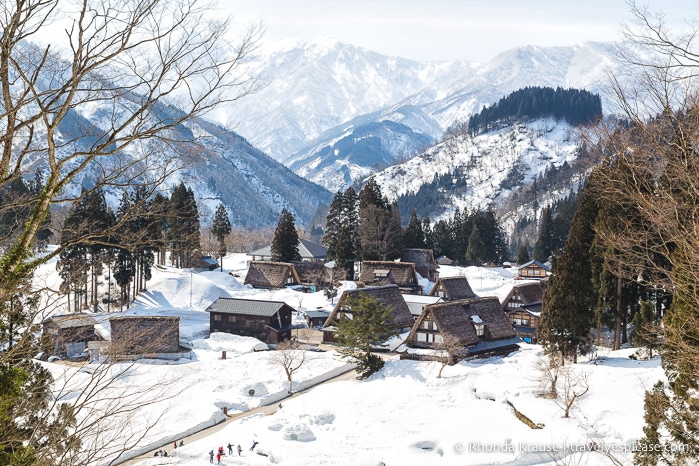
Electricity
- Outlets in Japan take two flat pins, same as North America.
- Electricity in Japan is 100 volts, similar to North America’s 110 volts, so there was no need to use a converter.
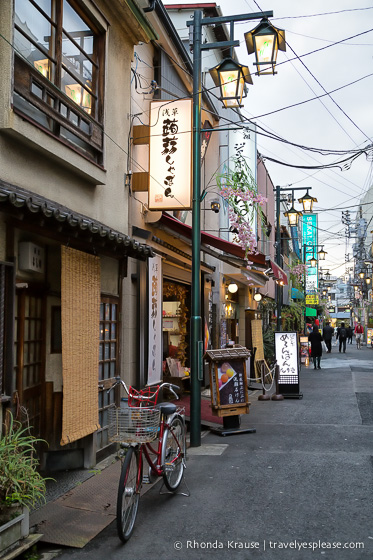
Restaurants and Food
- Popular dishes in Japan include rice bowls, noodle soups, hot pots and sushi. Vegetables, tofu and soy products are commonly used as ingredients in Japanese cuisine.
- I’m a picky eater and don’t like seafood or anything that’s remotely “exotic”, so I was worried I was going to starve in Japan. Lucky for me, there were enough western food options available to keep me alive (I ate a lot of Italian food!)
- Many restaurants have realistic-looking plastic “food” displays in their window, so you can easily see what’s on the menu. There are usually also pictures on the menu, eliminating the language barrier when ordering. Some places had English menus available.
- You will be given a warm, damp cloth to wipe your hands with at the beginning of a meal.
- A lot of the meals we ordered were big portions, in big dishes. Looking around, we noticed that many people were sharing their entrees, dishing out onto the provided small, side-plates.
- Some restaurants only had chopsticks but others also had forks and spoons.
- It is perfectly good manners to lift small plates and bowls up to chest level, rather than bend your head down to the food. It’s also okay to sip soup from the bowl and slurp noodles.
- Some restaurants will put a basket beside your table for you to put your belongings in (purses, bags etc.)
- You will likely have to ask your server for the bill when you are done your meal, as they usually don’t bring it automatically.
- The soft ice cream in Japan was some of the best I’ve ever had. It’s so creamy and delicious! It’s readily available and even comes in local flavours like green tea and sakura (cherry blossom).
- There are vending machines everywhere in Japan (the country has the world’s highest number of vending machines per capita!) We saw a lot more that sold drinks than snacks. You could choose from a wide range of drinks including juice, pop, hot coffee, hot and cold tea, and beer.
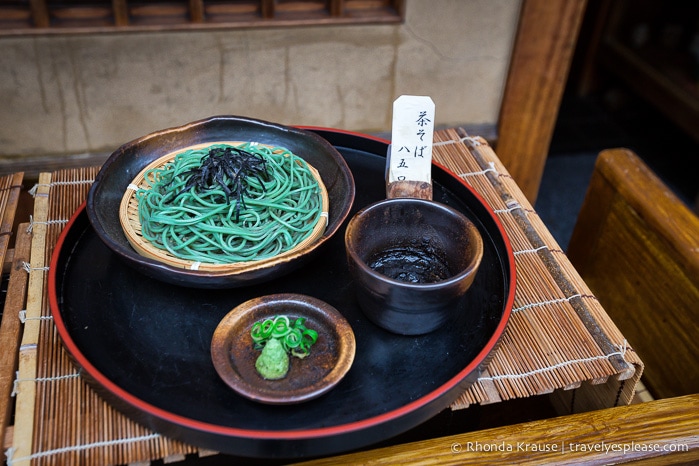
- Tipping in Japan is not expected and some people may even take offense.
Etiquette at Shrines and Temples
- To enter a temple building, you will have to remove your shoes. Sometimes you will be provided with a plastic bag to carry your shoes in, other times you can leave them at the entrance.
- There are no dress codes and the atmosphere is pretty relaxed. Still, show respect when visiting Japanese temples by not being noisy.
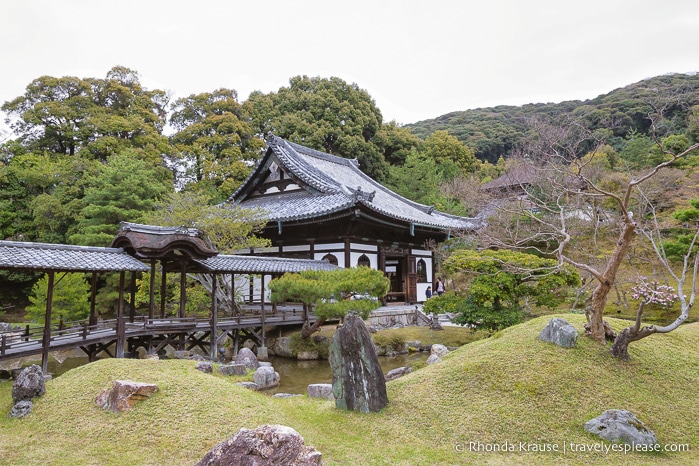
Safety in Japan
- Our impression was that Japanese society is very honourable and the people are very trustworthy. We never worried about walking around with a lot of cash and camera gear, even at night. Still, we took some precautions. In crowded areas, Mike moved his wallet into his front pocket and at night I would put my camera into the bag when walking in less touristy areas.
- Japan may have one of the lowest crime rates in the world, but thefts do occasionally occur, so don’t completely let your guard down.
- There were warnings in Tokyo’s Roppongi district about drinks being spiked with drugs.
- Women getting groped on crowded trains is a problem. The subway in Tokyo had designated cars for women only to help combat this issue.
- Japan experiences a lot of earthquakes, so educate yourself on how to stay safe if one occurs. The Tokyo Government has a bilingual Earthquake Survival Manual and there are emergency response plans for subway stations.
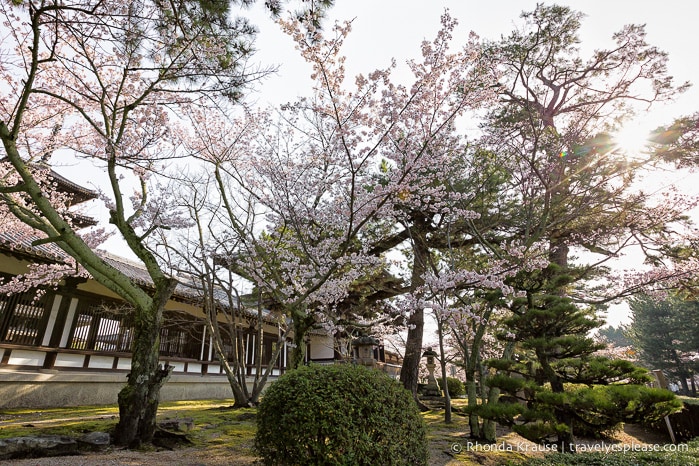
Helpful Apps for Travelling in Japan
- Japan Transit Planner- For train schedules, routes, and fares.
- Japan Travel (by Navitime)- Provides travel tips and short articles about places and things to do in Japan and allows you to plan a personalized itinerary. The offline spot search feature helps locate free Wi-Fi, ATMs, currency exchange stores, and train stations. The transit feature has an interactive railway map and route search so is helpful for planning travel between and within cities using all modes of public transportation. There’s even an option to filter efficient routes for Japan Rail Pass holders.
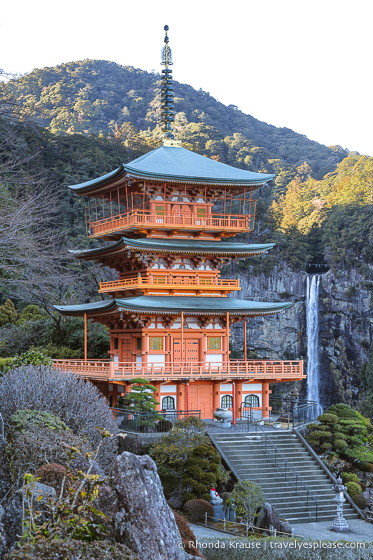
Other Tips & Observations on Our First Trip to Japan
- When paying for items at a shop, put your money onto the little tray on the counter. Some cashiers would not take money from our hands.
- Japan is meticulously clean, yet garbage cans on the street are practically non-existent. Do not litter- carry your garbage in your day bag until you get to your hotel.
- I noticed that most Japanese don’t eat on the go. I was having a snack while walking down the street and got some surprised looks. This custom probably helps keep the streets clean!
- Another interesting thing Mike noticed was that we were the only ones wearing sunglasses. I think we saw maybe one Japanese person wearing sunglasses during our entire two week trip!
- When in public, a lot of Japanese wear surgical masks covering their nose and mouth. This is very common during hay fever season. People will also wear them if they are sick to prevent the spread of illness.
- Japanese people never stepped in front of me when I was taking a picture. In fact, they would even stop other people from walking in front of me and ruining my photo.
- Even though there are a lot of people in Japan, things were never chaotic. There is always a sense of order, even in big crowds.
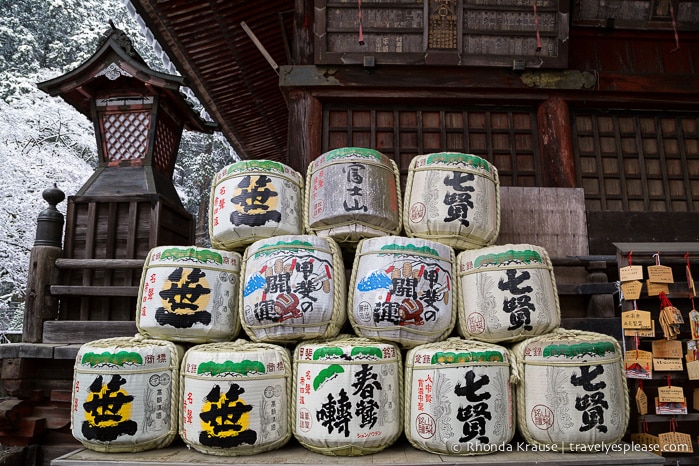
Final Thoughts About Our First Trip to Japan
We felt very much at ease travelling in Japan. I’m not sure if that’s because we were prepared, or because the Japanese people are very kind, helpful and welcoming. It was probably a combination of things, but either way we were impressed with how easy it was to travel around Japan.
I hope this guide helped relieve any uncertainty you might have about visiting Japan for the first time. You may also find our two week itinerary helpful for planning your first trip to Japan.
For more Japan travel information and destination inspiration, visit our Japan Travel Guide .
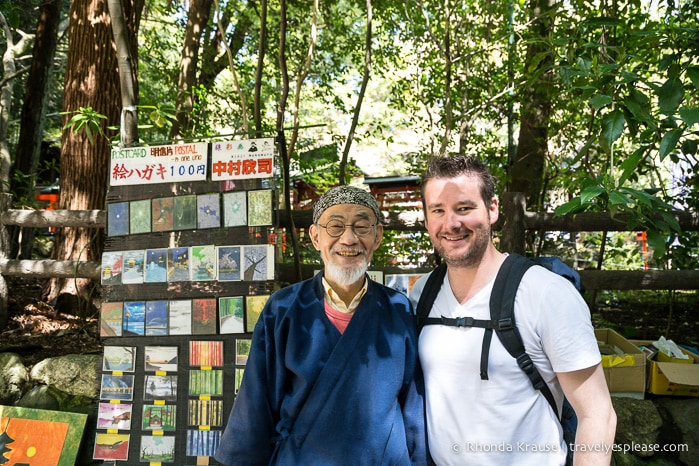
Resources to Help Plan Your First Trip to Japan
The Japan National Tourism Organization has some maps and brochures that you may find helpful for planning your first trip to Japan. You can download and view them here .
Below are some guidebooks that can also help you plan your first trip to Japan.
Click here if shopping from Canada .

For your convenience, here is a list of hotels in Japan. Please consider booking your Japan accommodations through the included link. It costs you nothing extra and helps support this website. Thank you!
Tours in Japan
Here is a trusted site where you can conveniently book tours and tickets for activities in Japan . There’s a large selection to choose from!
More Japan Travel Guides
- How to Spend 3 Days in Tottori- My Itinerary
- 9 Ways to Experience Japanese Traditions in the Chubu Region of Japan
- Koyasan- Guide to Visiting the Sacred Sites of Mt. Koya
- Itsukushima Shrine- Miyajima Island’s “Floating” Shrine

Follow Us On Social Media
Facebook | Instagram | X | Pinterest
Join the Facebook Group
Japan Essay
Article By: Isaac Goodman-Boyd

I loved Japan before I visited there– loved their video games, TV shows, martial arts, and amazing sword fights. But my only contact with Japan was through the Internet. Reading Japanese comic books (Manga) and watching Japanese cartoons (Anime) are my favorite pastime. So on Christmas day, when my parents gave me a book about Japanese culture, I was happy. When I opened the book and discovered the plane tickets inside, I was ecstatic.
In preparation for the trip, we took Japanese language lessons from a private tutor. By the time the trip rolled around I was eager to practice my new skills.
After landing in Narita airport, our first stop was the Zen Bed and Breakfast in Asakusa, Tokyo. My formal Japanese greeting impressed the owners. In the mornings, we had breakfast with them. I had never had rice and soup for breakfast before. Being a very picky eater, I rarely try anything new. But in Japan, I was determined to try everything. These home cooked breakfasts were the best meals we had on our trip.
In Tokyo, we visited the Imperial Palace. We were only allowed in the public garden but that was enough because it is as big as my neighborhood.
In Akihabara (Electric Town), we went to several arcades to see the latest in video games. My brother and I love these games and we’re pretty good. But we were nothing compared to the insane skill of the Japanese. The weird thing was, most everyone there were adults. My brother and I, two teenagers, were the youngest there.
After Tokyo, we went to Kyoto and stayed in our own town house called a Machaya (old merchants house.) The home was decorated in traditional Japanese fashion. My absolute favorite thing in the house was the bath. This room had a small deep tub, a shower next to it and a drain in the floor. Press a button and the tub automatically fills with hot water. I would shower with soap and cold water, then slowly lower myself into the boiling liquid. Any stress I ever had in my life seemed to melt away.
In Kyoto, we went to Chion-in Temple, which today is the headquarters for the J ` odo school of Buddhism. We passed through the San-mon, a Buddhist temple gate at the main entrance. This is the largest temple gate in Japan but even that couldn’t prepare me for the scale of Chion-in. Meditating in the public prayer space, I thought about how small I am compared to this enormous structure.
Before we knew it, we were back in Tokyo scrambling to see as many sights as we could on our final day. We woke at five A.M. to go to the fish market. My father and I took pictures of the largest fish we had ever seen while my mother and brother ate sushi. Despite my vow to try everything, I couldn’t bring myself to eat raw fish at six in the morning.
After the market, we went to Shibuya (a Tokyo Times Square). My brother went to another arcade while I tried to get my last fill of Japan. The streets were really crowed (Tokyo is very crowed). Despite this, no one was ever rude or angry. Even to American tourists who didn’t know where they were going.
I used to love Japan for its Anime and video games but now I feel a connection to its ancient culture and current society. I look forward to returning when I’m in college.
Dear Reader: This page may contain affiliate links which may earn a commission if you click through and make a purchase. Our independent journalism is not influenced by any advertiser or commercial initiative unless it is clearly marked as sponsored content. As travel products change, please be sure to reconfirm all details and stay up to date with current events to ensure a safe and successful trip.
2 Replies to “Japan Essay”
I loved Japan before I visited there– loved their video games, TV shows, martial arts, and amazing sword fights. But my only contact with Japan was through the Internet. Reading Japanese comic books (Manga) and watching Japanese cartoons (Anime) are my favorite pastime. So on Christmas day, when my parents gave me a book about Japanese culture, I was happy. When I opened the book and discovered the plane tickets inside, I was ecstatic.
ok it was funny not like a formal article
Comment on this article Cancel reply
Save my name, email, and website in this browser for the next time I comment.
This site uses Akismet to reduce spam. Learn how your comment data is processed .
Subscribe to our Newsletter
My First Visit To Japan
- Don't make a mess - keep your stuff tidy in your bag where possible
- Don't bring a ton of suitcases - you do not need to bring your kitchen sink. Don't get in the habit of "I'll bring this just in case I need it because you most probably won't (need it).
- AsianStudies.org
- Annual Conference
- EAA Articles
- 2025 Annual Conference March 13-16, 2025
- AAS Community Forum Log In and Participate
Education About Asia: Online Archives
Leading a short-term study trip for students in japan.
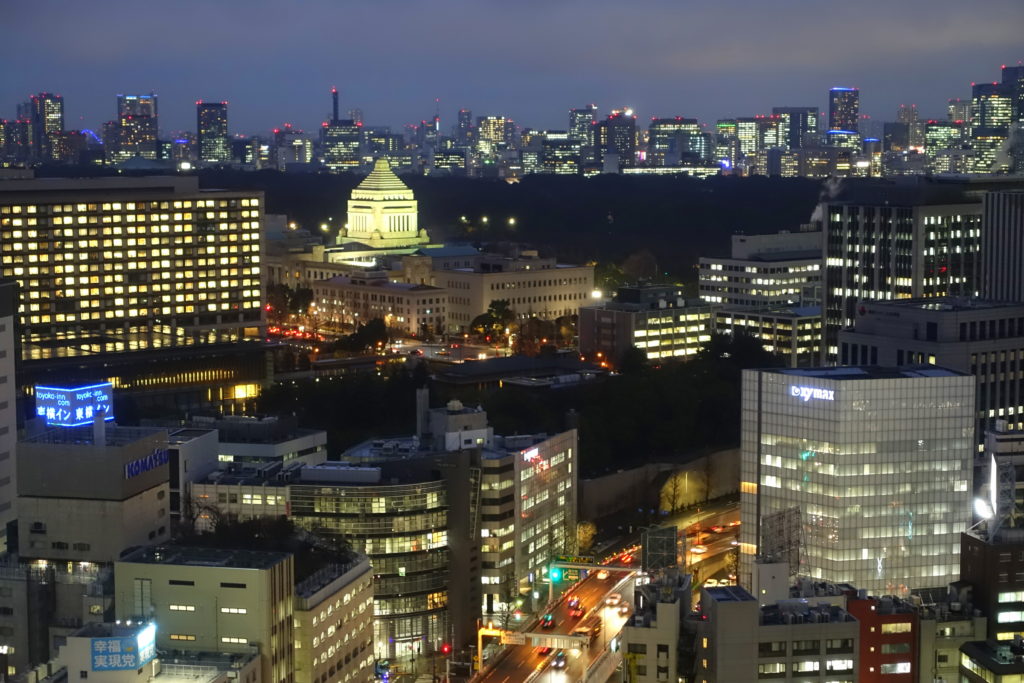
The best way for students to study the history, culture, and livelihoods of another country is through an organized in-country experience. There are various benefits that can accrue through such an endeavor. One can learn about a part of the world away from home while at the same time gaining a deeper appreciation of one’s own culture by looking at it from the outside. Ideally, a student will spend a full semester or year studying abroad, but that is a luxury that many cannot afford in terms of time or money. Another possibility is a carefully orchestrated group trip of ten to fifteen college-age students who travel with an informed instructor to a specific locale for two or three weeks of intensive study. The instruction should include the study of the host nation’s history, culture, and contemporary institutions and population. Efforts must be made to visit important historical or cultural sites, and to mingle with and especially have the chance for conversations with residents of the country. A short visit of two to three weeks can produce a fairly superficial view of another people and their culture, but even a brief encounter can give students a greater appreciation of the world around them.
Taking student groups abroad for short study courses was the most satisfying experience in my almost four decades of teaching at Mary Baldwin University (MBU) in Virginia. MBU has a short three-week “May term” every spring where it is possible for professors to take small groups of students abroad for mini-study tours. Over the years, I took students to Japan, China, Korea, Russia, Australia and New Zealand, Israel–Palestine, and all over Europe, including Switzerland, Italy, and Croatia. Because I am a Japan specialist who lived, worked, and studied in that country for several years as a student and young scholar, my most effective study abroad courses involved a dozen or more experiences in Japan from the early 1980s through 2015. The major goal of the essay that follows is to provide a nonspecialist undergraduate or high school instructor who might have the opportunity to take students to Japan (or visit Japan alone or with a partner) with what I believe to be an optimal Japan experience given limited time.
Developing a Brief Study Visit to Japan
A meaningful study trip to Japan must incorporate three elements: introducing the student to the natural beauty of the land, visiting important historical and cultural sites, and encountering modern institutions such as schools and government buildings. My colleagues and I also included visits to various businesses to allow students to see Japanese at work. Such visits included a stop at the news office of a major television station where students could watch a full noon news broadcast. We also included visits to a major Tokyo newspaper, department stores, and a recruiting office for Japanese students who wish to study in the United States.
Planning a study tour involves visits to many sites of interest, but there is also a realization that the students need at least two or three free days spread out throughout the trip to allow them to rest or go out on their own individually crafted experiences. Japan, with its justly deserved reputation as a safe place to travel and urban areas that consistently provide English-language signs for public transport and tourist attractions, is particularly appropriate for student-generated side trips. Students looked forward to these days off and found their own way to such places as Tokyo Disneyland, the Ghibli Art Museum in the Tokyo suburb of Mitaka to study Japanese animation, and Tokyo’s early morning fish market.
Each of these Japan study tours was listed in my college’s catalog as a three-credit-hour May term course titled Introduction to Asia. Students had to register for the course and subsequent trip by the beginning of February. The faculty included myself and another colleague who went on all Japan study tours with me. We met with our ten to fourteen students for six two-hour sessions during the spring semester, where we got to know each other as a group and we familiarized the students with the dynamics of the trip. Students received a brief overview of traditional and modern Japanese history, religion, and aspects of modern culture, including the role of education, the changing status of women, and modern Japanese pop culture. Students gained a lot by viewing the 2005 movie Nana about contemporary pop stars in Japan. Given the continued popularity of Japanese popular culture, more recent movies might be substituted for the one we used. We always invited exchange students from Japan to visit the class to talk about youth culture in Japan.
We also assigned students various readings on Japanese history and culture, and required a series of essays responding to questions concerning the readings. Students read Christopher Goto’s excellent 2009 book Modern Japan: A Very Short Introduction , my own 2001 book Under the Gaijin Gaze about education and the changing status of women, and selected articles on Japanese culture from past issues of Education About Asia . We developed essay questions asking students to discuss various Japan topics such as the role of Shinto as a religion of thanksgiving, who the students felt was responsible for Pearl Harbor, and to compare and contrast the worldviews of young women in Japan and the United States. Since the course was open to all Mary Baldwin students, including those who had never taken a course in Asian studies, this preparatory work meant that every participant had some background understanding of Japan before going there.
Another advantage of our six meetings before the actual trip was that we got to know each other as a group. We spent a lot of time with group discussions and listening to student questions, which always created a greater sense of group cohesion, which is vital for the success of the trip. By the end of this preparatory class, everybody knew each other’s names and personalities, which allowed us to work more as a cohesive group when in Japan.
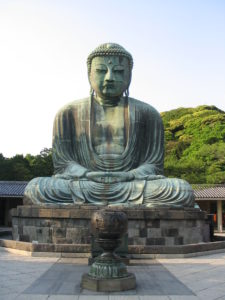
Travel and Lodging
Taking off from Dulles International Airport was always an exciting time, especially for those two or three students who had never flown before and who, when they arrived in Japan, were riding trains for the first time. There were always students who had never really been away from Virginia but who were on their way to Tokyo. We always tried to travel on a Japanese airline, where our students could become acquainted with Japanese service and watch select Japanese movies en route.
When we began making these study trips to Japan in the mid-1980s, we found that it was most economical in terms of cost and time to choose one base of operations rather than moving students from one hotel to another. This led to our decision to focus our trips on Tokyo, which offered, along with some day trips, all the sites that we wanted students to experience while in Japan: nearby historical sites such as Kamakura, Hakone, and Nikkō would give students a sense of Japan’s heritage and natural beauty, while Tokyo itself would provide opportunities to visit museums, a couple of schools, the National Diet (parliament), and various Tokyo-area businesses.
There are many fine, efficient hotels in central Tokyo that cater to foreign student groups. We always chose the Hotel Asia Center of Japan ( Ajia Kaikan ) in Akasaka, very close to the Roppongi area of central Tokyo. The Hotel Asia Center of Japan still caters to foreign study tour groups with inexpensive but clean rooms and individual baths. We got double and triple rooms at very reasonable rates, which included a sumptuous breakfast that always included fresh fruit and some of the best croissants I have ever eaten. The center was very near several major subway lines that could take us anywhere we wished to travel in the city. Students soon became quite adept at using the Tokyo subways and made full use of them on their own during their free days.
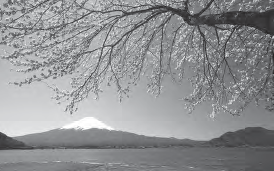
We always timed our trips for May just after the crush of the national holiday Golden Week (late April and early May) and before the dreary and muggy monsoon rainy season that makes portions of summers so wet and miserable in Japan. May in Japan offers cool, sunny days and the glory of beautiful gardens in full bloom.
Historic and Scenic Sites Relatively Near Tokyo
The Tokyo area is blessed with a number of important cultural and historic sites that were not destroyed during the Pacific War. The most important of these places is the coastal city of Kamakura, which from 1185 to 1333 was the shogunal capital of Japan. Visitors to Kamakura, only about an hour from Tokyo station by train, can see a great number of stunning Buddhist temples and shrines that rival many of those found in Nara and Kyoto. I always took my students to the Hase temple complex, which includes caves, beautiful gardens, historic temples, and stunning mountain views of Kamakura’s beaches and harbor. We also visited the big Buddha (daibutsu) and Hachimangu Shrine, and hiked across the island of Enoshima to enjoy the caves, rocky coastline, and crashing waves on the far side of the island. Enoshima is connected to the mainland by a short causeway and is located just west of Kamakura, a few minutes by train from Kamakura station.
Another historic site that all visitors to Japan should visit is Nikko National Park deep in the mountains of central Japan but only two hours one way from downtown Tokyo. There is a large temple and Shinto shrine complex that honors the Tokugawa shoguns, as well as spectacular natural scenery, including Lake Chuzenji with its famous waterfall, which enthralled each of my student groups.
Students always got a thrill when we traveled from Tokyo to nearby Fuji Hakone National Park, roughly ninety minutes, and about fifty miles west by train from Shinjuku station in Tokyo. The trip includes a good haul on the Hakone Tozan railway, several cable car rides, and a lengthy boat ride across Lake Ashinoko with spectacular views of Mount Fuji. This trip also includes a visit to various thermal hot springs, where tourists can experience the beauty of Japan’s mountain scenery.
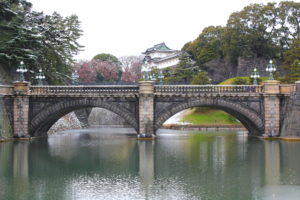
Opportunities in Tokyo
Tokyo is a vast, very modern city with a virtually infinite number of interesting opportunities to pursue. In order to deepen historical understanding of the city, I always took my students first to the outer moat and views of the Imperial Palace (once the residence of the Tokugawa Era shoguns from 1600 to 1868), which are spectacular. Another must-visit is the Meiji Shrine in the Harajuku section of Tokyo. Students always took a special liking for the Inner Garden, with its beautiful iris garden that was always in full bloom when we visited. I always took the students to the huge Edo Museum, which gives a very colorful and comprehensive view of Tokyo history from the Edo period (1600–1868) to the Pacific War bombing and rebirth of Tokyo after the war.
Some students always asked me to take them to the Yasukuni War Memorial Shrine and associated war museum. Before visiting Yasukuni Shrine, I explained that it was a memorial to honor Japanese war dead and that several of Japan’s notorious wartime leaders were honored there. The adjoining museum’s focus is Japan’s modern military history and includes a brief movie honoring Japan’s war dead.

When I was a full-time faculty member, Mary Baldwin College had two sister school relationships with a small college outside of Tokyo and with Soka University in Hachioji, a Tokyo suburb. Instructors and students on a study tour of Japan should make every effort to visit one or more Japanese schools. We spent a full day visiting the Soka primary, middle, and high schools in Tokyo, which gave my students ample time to meet and mingle with Japanese students of all ages. There was also a visit with students at our other sister school.
Another must-visit is the National Diet in Tokyo. I had long ago befriended a leading member of the Diet, who always met with our students and personally guided them through some of the inner sanctums of Japan’s parliament. This is not a likely one-to-one relationship many study tour leaders might have, but there are also public tours that foreigners are welcome to join. Lunch in the parliamentary dining room is also highly recommended.
Nara and Kyoto
As described earlier, because of severe time limits and the abundance of things to see and do in Tokyo, we made the Tokyo (Kantō) region the hub of our activities. However, I offered an optional one-day trip to Nara and Kyoto for those students interested in getting a glimpse of these historic cities. We left on the first morning shinkansen (bullet train) headed to Kyoto from Tokyo Station, arrived at 8:30 a.m. We spent a full morning in Nara visiting Tōdaiji temple and associated temples and shrines in the morning, as well as a variety of temples and Nijo Palace in the afternoon, in Kyoto, we paid a courtesy visit to our sister college in Kyoto, Doshisha Women’s College. We caught the last train back to Tokyo after dinner.
Our students got a very good taste of Japan in two and a half weeks and were always reluctant to leave. It was fascinating to learn what they had done on their free days. A number always made the trek to Tokyo Disneyland or went with me to see a Japanese baseball game at the Tokyo Dome or at Meiji Jingu Stadium near our hotel. Others found their way to the morning fish market, and all of them spent countless hours in various large department stores in Shinjuku and Harajuku and at various youth hangouts in Shibuya. I was always amazed at how adept even the shiest student became at mastering the maze of Tokyo subways.
Students were obliged to keep a detailed journal of their impressions of Japanese life, which also became the basis of their final grade for the Introduction to Asia course.
Two to three weeks is a very short time to visit another country, but it was a very welcome opportunity for students with limited time and budgets. They always commented that their own culture was in itself unique, and they expressed greater respect and tolerance for people from other places. A number of these students later returned to Japan to spend a full semester at one of our sister schools in Japan. Many became teachers in Japan’s JET Program, and even today, years after my retirement from full- time teaching, there are a half-dozen or more former students who have made Japan their permanent homes.
Mary Baldwin’s unique relationship with Japanese schools has brought dozens of Japanese students to study at our Virginia campus for a semester or a full year. We also receive students from India, Taiwan, China, and Korea, which allows American students to encounter young Asians on their own turf. I am grateful to have been part of the international exchanges that have occurred because of the college.
I also hope this essay is helpful to those instructors and students who wish to maximize their opportunities in Japan given limited time.
Share this:
- Click to share on LinkedIn (Opens in new window)
- Click to share on Facebook (Opens in new window)
- Click to share on Twitter (Opens in new window)
- Click to share on Pinterest (Opens in new window)
- Latest News
- Join or Renew
- Education About Asia
- Education About Asia Articles
- Asia Shorts Book Series
- Asia Past & Present
- Key Issues in Asian Studies
- Journal of Asian Studies
- The Bibliography of Asian Studies
- AAS-Gale Fellowship
- Council Grants
- Book Prizes
- Graduate Student Paper Prizes
- Distinguished Contributions to Asian Studies Award
- First Book Subvention Program
- External Grants & Fellowships
- AAS Career Center
- Asian Studies Programs & Centers
- Study Abroad Programs
- Language Database
- Conferences & Events
- #AsiaNow Blog
Sample details
Related topics.
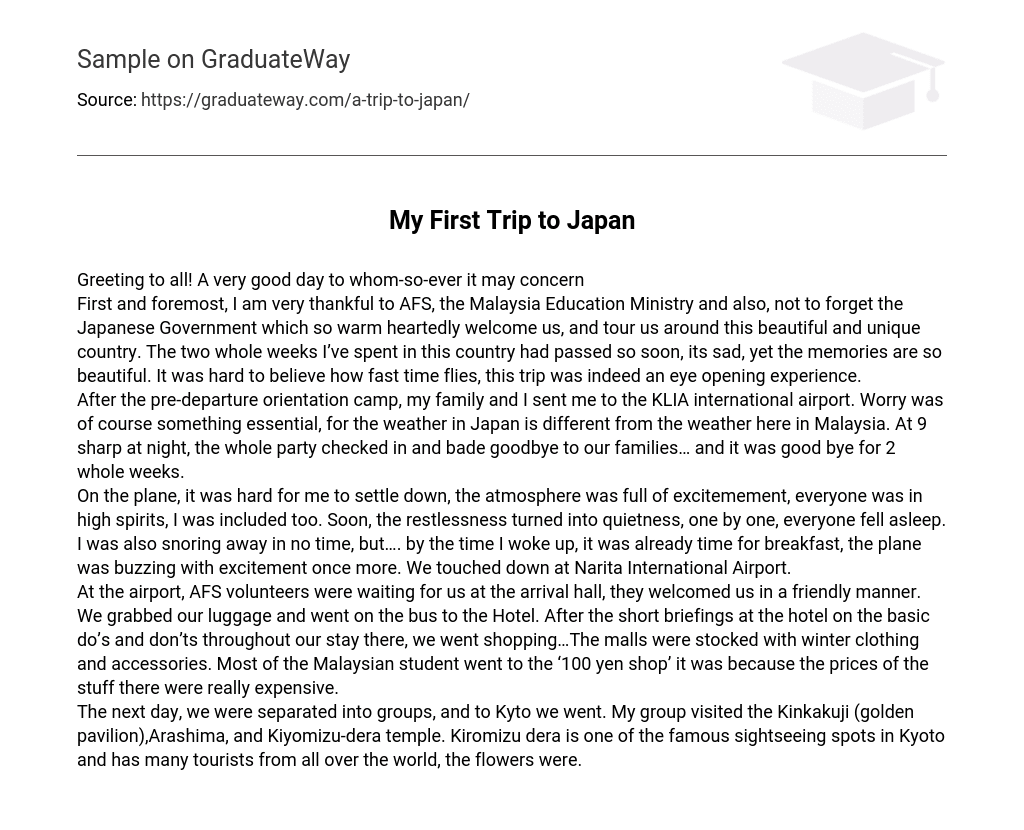
My First Trip to Japan
Greeting to all! A very good day to whom-so-ever it may concern First and foremost, I am very thankful to AFS, the Malaysia Education Ministry and also, not to forget the Japanese Government which so warm heartedly welcome us, and tour us around this beautiful and unique country. The two whole weeks I’ve spent in this country had passed so soon, its sad, yet the memories are so beautiful.
It was hard to believe how fast time flies, this trip was indeed an eye opening experience. After the pre-departure orientation camp, my family and I sent me to the KLIA international airport. Worry was of course something essential, for the weather in Japan is different from the weather here in Malaysia. At 9 sharp at night, the whole party checked in and bade goodbye to our families… and it was good bye for 2 whole weeks. On the plane, it was hard for me to settle down, the atmosphere was full of excitemement, everyone was in high spirits, I was included too. Soon, the restlessness turned into quietness, one by one, everyone fell asleep.
I was also snoring away in no time, but…. by the time I woke up, it was already time for breakfast, the plane was buzzing with excitement once more. We touched down at Narita International Airport. At the airport, AFS volunteers were waiting for us at the arrival hall, they welcomed us in a friendly manner. We grabbed our luggage and went on the bus to the Hotel.
After the short briefings at the hotel on the basic do’s and don’ts throughout our stay there, we went shopping…The malls were stocked with winter clothing and accessories. Most of the Malaysian student went to the ‘100 yen shop’ it was because the prices of the stuff there were really expensive. The next day, we were separated into groups, and to Kyto we went. My group visited the Kinkakuji (golden pavilion),Arashima, and Kiyomizu-dera temple. Kiromizu dera is one of the famous sightseeing spots in Kyoto and has many tourists from all over the world, the flowers were.
Cite this page
https://graduateway.com/a-trip-to-japan/
You can get a custom paper by one of our expert writers
Check more samples on your topics
Japan research paper in japan and.
Japan Essay, Research PaperIn Japan And Its World, by Marius B. Jansen, Jansen describes the altering thoughts the Japanese have had of themselves and the Western universe every bit good as the thoughts the Americans has had of the Japanese. The Japanese have had to accommodate to a different universe and yet go from a
Slip or Trip English
On August 13, 2013, at approximately 1:37 A. M. , Sparks police department received a call that an accidental death has occurred. Queenie Volupides, the wife of the deceased Arthur Volupides, claims that her husband slipped and fell on the stairs while he was coming down to the kitchen for another alcoholic beverage. She says
The Costa Rica Freshman Field Trip
The Costa Rica freshman field trip would be a great opportunity to observe a different country’s culture and help me with understanding foreign landscape to improve my future career as a landscape architect. Costa Rica is naturally a beautiful country and being able to visit there would be a once in a lifetime opportunity for
My Trip to Australia on Summer Vacation
After a long monotonous school schedule and unbearable heat of summers, I was looking forward to a big day for every student that is the day our summer vacations start. My summer vacations started from 10th May the last day of school, it was exciting as I have been discussing about the holidays plan with
My Trip to Six Flags
Later, than day my mom's friend came to pick us up and the trip began. One place we stopped was at a restaurant, it was really nice and had a lot of good food but I can't remember the name of it. We also stopped at gas station, where I saw this pretty girl so
A Trip to Howard Days 2016
Robert E. Howard
Another enjoyable Howard Days has come and gone, and it is safe to say that any who attended were glad they did. The number of attendees on June 10th and 11th seemed to be a bit above average, reflecting a trend toward straining the capacity of current venues and program formats. The panel audiences are
Biology field trip – A study of rocky shore ecosystem
1. To understand the structure and functioning of a rocky shore ecosystem.Objectives1. To measure climatic factors by means of an environmental comparator with a light probe, a whirling hygrometer, a hand-held wind meter, and a thermometer;2. To measure pH of sea water on the spot;3. To sample shore animals by means of a transect line
Quik Trip – Business Summary
Business Summary 2009 represents several years in a row that QuikTrip, the 24 hour convenience store operating stores in the Midwest, Southeast, and Southwest, has been named in Fortune magazine’s “100 Best Companies to Work For”. Employees are treated so well in wages, benefits, and training that long? term retention of 20 years or more
Differences Between Volunteering and any Other Trip
Benefits of Volunteering
Volunteering
Take a risk and stop being afraid or making excuses, traveling is not about being just a tourist but instead is about experiencing true risk and adventure to eradicate the fears of your life. School and Travel Abroad Programs If you are currently a young adult attending a university you still have a great control

Hi, my name is Amy 👋
In case you can't find a relevant example, our professional writers are ready to help you write a unique paper. Just talk to our smart assistant Amy and she'll connect you with the best match.

Essay on My First Travel Experience
Students are often asked to write an essay on My First Travel Experience in their schools and colleges. And if you’re also looking for the same, we have created 100-word, 250-word, and 500-word essays on the topic.
Let’s take a look…
100 Words Essay on My First Travel Experience
Introduction.
I still remember my first travel experience. It was a family trip to a beautiful hill station, Shimla.
The Journey
We travelled by train, which was an adventure in itself. The scenic beauty outside the window was enchanting.
Exploring Shimla
In Shimla, we visited famous places like Mall Road and Jakhu Temple. The snow-capped mountains were a sight to behold.
This trip was more than just sightseeing. It was about spending quality time with family, trying new things, and making memories. Truly, my first travel experience was unforgettable.
250 Words Essay on My First Travel Experience
My first travel experience was a profound journey that enriched my understanding of the world and myself. It was not merely a physical relocation, but a voyage of self-discovery and personal growth.
The Destination
My destination was the enchanting city of Rome, a place where history and modernity coexist in a harmonious symphony. The city’s architecture, culture, and cuisine were a stark contrast to my familiar surroundings, sparking curiosity and excitement within me.
The journey was an adventure in itself. The thrill of boarding my first flight, the anticipation of the unknown, and the exhilaration of soaring above the clouds were emotions I had never experienced before. I was struck by the realization of how vast and diverse our world truly is.
Experiences
In Rome, I was captivated by the Colosseum’s grandeur, the Vatican’s spiritual aura, and the timeless beauty of the Trevi Fountain. I savored authentic Italian cuisine, learned about the city’s rich history, and interacted with locals, gaining insights into their lifestyle and perspectives.
This travel experience transformed me. It broadened my horizons, challenged my perceptions, and instilled in me a sense of global citizenship. It was an enlightening journey that taught me about the world’s diversity and the importance of embracing different cultures. My first travel experience was indeed a journey of self-discovery that I will always treasure.
500 Words Essay on My First Travel Experience
Traveling is a transformative experience that opens our minds to the vastness of the world, introducing us to different cultures, landscapes, and perspectives. My first travel experience was a journey that significantly shaped my outlook on life and the world around me.
The Anticipation
The weeks leading up to my first trip were filled with a mixture of exhilaration and anxiety. I was about to embark on a journey to Rome, Italy, a city steeped in history and culture. As someone who had never left my small hometown, the prospect of immersing myself in a foreign environment was both exhilarating and terrifying. I spent countless hours researching, planning, and imagining the experiences I would encounter.
The actual journey was a whirlwind of emotions. The moment I stepped onto the airplane, I felt a wave of excitement wash over me. The hum of the engines, the chatter of passengers, and the anticipation of the unknown made my heart race. As the plane lifted off, I felt a sense of detachment from my familiar surroundings and a thrilling connection to the vast, unexplored world.
The Arrival
Upon arrival in Rome, I was immediately struck by the stark contrast between my rural hometown and this bustling, vibrant city. The air was filled with a blend of unfamiliar sounds, smells, and languages, creating a sensory overload that was both overwhelming and enthralling. The architecture was breathtaking, with ancient ruins coexisting with modern structures, creating a living testament to the city’s rich history.
The Exploration
Exploring Rome was an education in itself. The Colosseum, the Roman Forum, and the Pantheon were not just historical sites; they were tangible reminders of a civilization that had shaped the world. Each monument, each cobblestone street, each local cuisine offered a unique insight into a culture that was vastly different from my own. This exploration was not just a physical journey but also a journey into understanding the diversity and interconnectedness of human experience.
The Transformation
My first travel experience was more than just a trip; it was a transformative journey that broadened my perspective and deepened my understanding of the world. It taught me to appreciate the beauty in diversity, to embrace the unfamiliar, and to remain open to new experiences. It sparked a desire to explore, to learn, and to grow, shaping my future travels and my outlook on life.
In conclusion, my first travel experience was a significant milestone in my life. It was an adventure filled with discovery, learning, and personal growth. It served as a reminder of the vastness of the world and the richness of human experience. Traveling is not just about the destinations we visit, but the journey we undertake and the transformations we undergo along the way.
That’s it! I hope the essay helped you.
If you’re looking for more, here are essays on other interesting topics:
- Essay on My Best Travel Experience
- Essay on Travelling
- Essay on Travel by Train
Apart from these, you can look at all the essays by clicking here .
Happy studying!
Leave a Reply Cancel reply
Your email address will not be published. Required fields are marked *
Save my name, email, and website in this browser for the next time I comment.

Life with Larissa
Welcome to My Side of the World!

Photo Essay of Japan

Remember when I informed you guys that I was going to Japan ? Well, it happened over Thanksgiving break! It was my first time visiting an Asian country, so I was a little nervous and anxious about what to expect. I didn’t speak or read the language. I did give Duolingo a try, but it didn’t help me out too much. Turns out though, I had nothing to worry about. The trip went pretty smoothly, and we only got lost a handful of times! I have so many stories from our trip, but to kick off my Japan posts, I put together a photo essay of Japan to share some of my favorite pictures!
photo essay of japan:
Zozoji Temple and Tokyo Tower – While we were at the temple, a family was holding a ceremony for their two young daughters. Everyone was dressed up and the daughters were wearing kimonos. It was pretty neat to be able to see!
Asakusa Shrine – The Asakusa District may arguably be my favorite. Here, you’ll find this stunning shrine which is one of the most famous Shinto shrines in all of Tokyo. This shrine stands to honor the three men who founded the Sensō-ji Temple.
Sensō-ji Temple – Right next door to the Asakusa Shrine, you’ll find the Sensō-ji Temple. You’re able to go in and see the intricate details that make up the temple. People still go there for religious reasons, and no photographs are supposed to be taken during any ceremonies.
MariCar Tour – Vika and I went on a MariCar Tour, and it was honestly one of the best tours I’ve ever been to. It was so much to actually pretend like I was part of the Mario Kart game, as that was a large part of my childhood, and I still play it to this day! Stay tuned for a blog post specifically about our experience!
Fushimi Inari Shrine – Seeing this in person was so surreal! I didn’t realize how long the shrine actually went. We only saw a portion, and there are actually differing heights of these structures. I didn’t know that either!
Entrance of the Fushimi Inari Shrine – Walking up to the Fushimi Inari Shrine was incredible. There were so many people coming from different parts of the world to see this famous shrine. Before entering, you’re supposed to cleanse yourself by washing your hands and mouth using the fountain and ladles provided for visitors.

The Arashiyama Bamboo Forest – Just like the Fushimi Inari Shrine, the Bamboo Forest went on a lot longer than we originally thought. Due to time constraints, we only saw a portion, but it was so cool. When the wind would blow, the bamboo would sway and bend, some trees almost touching the ground, and none of them would break! It was so cool to see in person!
Sogenchi Garden – We actually almost missed this incredible garden! We had just finished visiting the Bamboo Forest, and we passed the sign for this United Nations World Heritage Site. Of course we had to stop to see what it was about, and I’m BEYOND happy we did. The beauty this garden had to offer was truly breathtaking! The richness of the fall colors were stunning!
Osaka Castle – Before entering the Osaka Castle, we had the opportunity to take a picture as Samurai warriors, so of course we did! Afterwards, we walked through the Osaka Castle, which is now turned into a museum for people to learn of its history. This was the first museum that I’ve ever been to that had holograms to help depict what happened in the past.
Osaka Castle – This museum you have to start at the top and work your way down. We weren’t disappointed when we arrived at the top level and saw this view. Of course in the past it was to aid in spotting oncoming enemies.
Noodle Pancakes – To say I ate a lot of noodles during my time in Japan would be an understatement. You can find many different variations of noodle dishes throughout the country, even noodle pancakes. They were made right in front of us, and it was definitely an interesting and tasty meal!

The Famous Dōtonbori Sign – We had no idea about this sign actually, but the friends we met up with informed us that this sign was iconic of Osaka, and represented where the center of the old town stood. They also told us it was customary for visitors to come and take a picture with the sign, imitating his position, so of course I did 🙂
Well, there you have it – some of my favorite pictures from my incredible trip to Japan! As I’m working on my photography skills, I know my photos did not truly capture the beauty the country has to offer, but I tried 🙂 Let me know which picture is your favorite!
Share this:
- Click to share on Facebook (Opens in new window)
- Click to share on LinkedIn (Opens in new window)
- Click to share on Twitter (Opens in new window)
- Click to share on Tumblr (Opens in new window)
- Click to share on Pinterest (Opens in new window)
- Click to email a link to a friend (Opens in new window)
28 thoughts on “Photo Essay of Japan”
Japan looks like a beautiful place. Maybe one day, I’ll go there too.
I hope you are able to make that happen! 🙂
WOW I have always wanted to travel to Japan. Your photos are making it really hard not to book a trip right now!
Thank you for those kind words! Sometimes, you just got to book the ticket, and think about it later. Haha…I still can’t believe I went!
Wow! Japan looks amazing! Definetely on my bucket list 😀
That’s awesome to hear! I hope you’re able to go there soon!
Going to send this post to my son. He has always wanted to visit Japan and I know would enjoy reading and seeing your photos.
Oh that’s awesome! I hope he has the opportunity to visit one day 🙂 I have a few more Japan posts lined up, if he wants to stay tuned 🙂
It looks like you had an amazing time on your trip! I’ve always wanted to visit Japan but have not made it there just yet.
Yes! I had a blast! I love how you say “just yet” because that means you’re going!! When you make it happen, you’re going to have an amazing time!!
Japan is amazing! I was fortunate to live there for 5 1/2 years while I served in the Navy. I lived in Sasebo (southern Japan) and we drove all over. So many amazing temples, parks filled with cherry blossoms, and the people are just wonderful! I would really love to go back there now that my kids are older.
That’s incredible. Thank you for your service. I had the opportunity to visit various shrines and temples, but unfortunately the famous cherry blossoms were not in season. I guess I’ll have to go back in spring one year! I hope you’re able to go back! I bet that would be a truly special trip! Do you remember any Japanese?!
This looks like a great trip! That MariCar tour though, that looks like a blast!
Oh my gosh! That tour was so much fun! I couldn’t stop smiling the whole time, and then my teeth would get cold from the wind! Hahaha…highly recommend if you’re ever in Japan!
What an amazing experience! Japan is definitely a place I’d love to go. Really enjoyed looking at the photos.
Thank you for your kind words Kristine! I hope you’re able to go one day, and experience it for yourself. It truly is incredible!
How awesome! It looks like you had an amazing trip! Japan is one of those places I’ve always wanted to visit. P.S. Those Noodle Pancakes actually look super good – I think I’d have a blast trying all the different food! 🙂
I had a blast, and I was able to try new things – experiences and foods – and sometimes it was just so surreal that I was even there! Those noodle pancakes were quite tasty, but I was a little skeptical at first. Thank you for your comment 🙂
Wow this all looks so amazing! I know a lot of people who have been to Japan and it’s never really been on my list but just to see the mountains and the bamboo and the temples I’d go lol. It looks so beautiful and fun!
Unfortunately, we didn’t have time to make it to Mt. Fuji, but maybe I’ll be back one day to see it. The pictures I’ve seen are incredible! And the Bamboo Forest and various temples and shrines we visited are definitely worth the trip! Truly breathtaking!
That bamboo! Oh my gosh it is incredible! It looks like you had a great time here!
I had a lot of fun! It was such an amazing experience. And yes, the Bamboo Forest was fabulous!
Congrats on your first visit to Japan! You made the most of it, loved your pics! 😀 xoxo, Pilar
Thank you! 🙂
This looks amazing! I would love to visit Japan – for the temples, and for the food 🙂
Thank you! And yes – so worth the visit! On one of the pictures I shared on my Instastory, the caption was: “Bc the only thing I literally do is find new treats to try”. Haha…because I realized all my pictures were of food!
Japan?? That’s so amazing!! Super jealous. It looks like you had a lot of fun, I can’t wait to travel there one day on my own. Thank you for sharing your adventures! ♥
Thank you for taking the time to read and comment! It was definitely a blast. You’re going to have so much fun when you go 🙂
Leave a Reply Cancel reply
Your email address will not be published. Required fields are marked *
By using this form you agree with the storage and handling of your data by this website. *
Notify me of follow-up comments by email.
Notify me of new posts by email.
This site uses Akismet to reduce spam. Learn how your comment data is processed .
Privacy Overview
- Skip to main content
- Skip to primary sidebar
- About Art Class Curator
- Media & Press
- Programs for Schools
- Member Login
- Search this website
Art Class Curator
Hands-on and Minds-curious Art Learning
Experience Art Book and Card Deck on Kickstarter!
April 14, 2016 2 Comments
My Trip to Japan: Travel and Tokyo
I am recently back from a once-in-a-lifetime trip to JAPAN! My sister is currently living the ex-pat life in Tokyo, and I just had to go visit before she comes back this summer. I have so so much to write about that I’m not even sure where to start. I think I’ll start with an overall summary of the trip, and then write many individual posts about the various places and artworks I experienced on my journey.
First up, I’ll cover my first few days from the long trek to get to Japan and the first stops in Tokyo.
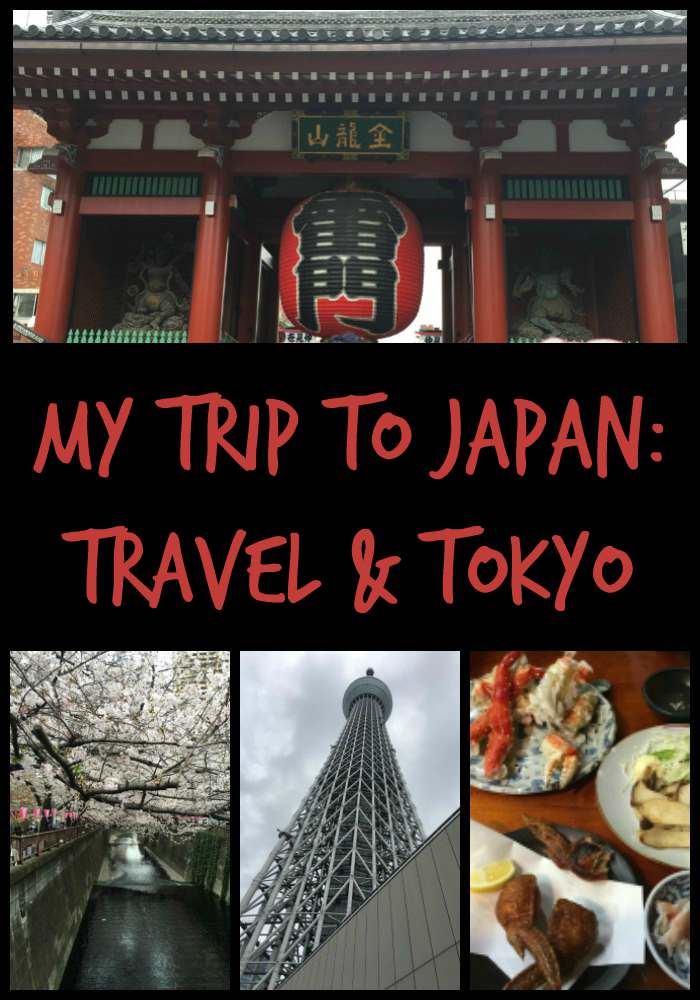
This will be a great journal for me to look back at my trip!
Day 1: Travel
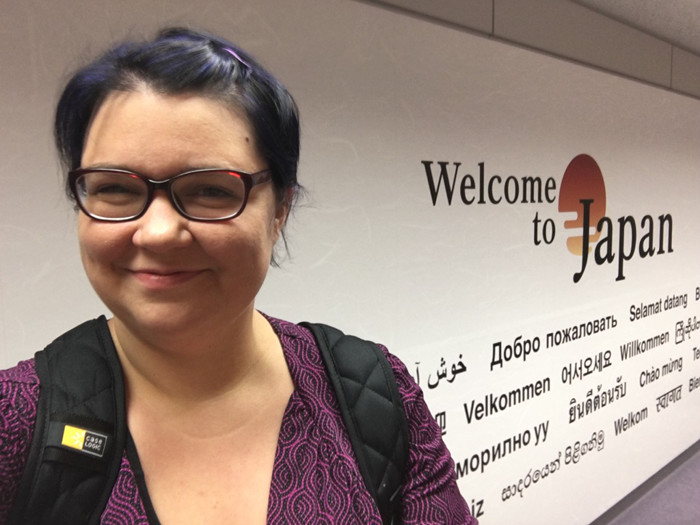
I left bright and early on Wednesday morning from DFW airport. I flew 3-4 hours to Detroit and from there, I took a 13 hour plane ride to Tokyo. I slept very little and watched lots of movies. I splurged for the Delta Comfort seat, so I had a little bit of extra leg room. Worth it.

When I got to Japan, I took a 1+ hour train ride to Tokyo station where my sister met me.
I arrived at my sister’s apartment around 6pm Thursday. I powered through the exhaustion and jet lag with a dinner at Andy’s in the Ginza neighborhood. I don’t like crab, but these crab legs were amazingly delicious. Also gyoza-stuffed chicken wings.

I don’t know how they got the gyoza in there, but it as so so good. My number one question about my trip so far has been about the food.
We also wondered around the neighborhood, had some wine at a wine bar, and enjoyed checking out all of the store and restaurant fronts. Each one was such a spectacle, and I loved them all.
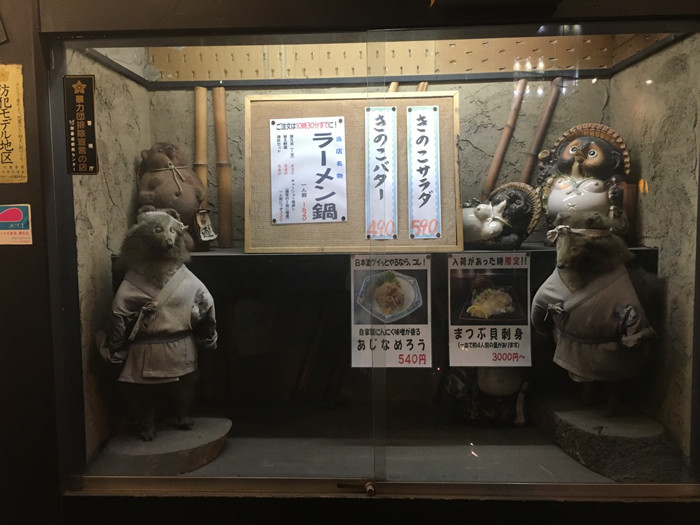
My sister said she wanted me to feel like I was in Japan on my first night, and boy did I!
Day 2: A Full Day in Tokyo
In the morning of the first day, we took it a bit slow and had brunch at a place near my sister’s house. Interestingly, my sister says it’s hard to find breakfast in Japan, because Japanese people don’t usually eat out in the morning. Fun fact.
Sensō-ji Temple

After breakfast, we headed to Sensō-ji which is Tokyo’s oldest Buddhist temple. Originally founded in 645 C.E., it was destroyed in World War II and was later rebuilt.

It was packed with tourists, but it gave the area a very festive feel. There were lots of little shops and food vendors filling the streets around it.
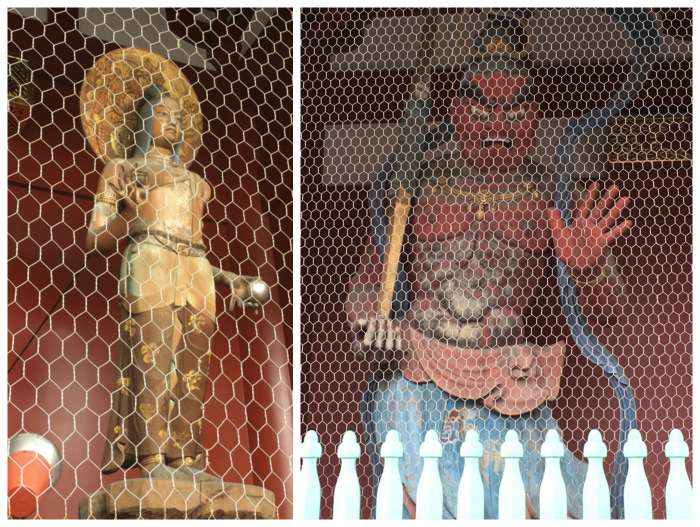
I loved the giant sculptures and lantern of the Kaminarimon , or “Thunder Gate.” The sculptures, representing both Shinto and Buddhist gods, varied from fierce to calm.
I visited many more temples and shrines on my trip, and I will be writing about them in more detail in the weeks to come!
And since I know you care about the food, I then ate some bacon-wrapped rice balls covered in a green onion slaw from a food vendor. I smelled like onions the rest of the day, but I didn’t care one bit.
Skytree Tokyo
From Sensō-ji, we hopped on the subway a couple of stops to the Skytree Tokyo.

Skytree is the tallest structure in Japan, the second-tallest structure in the world, and the tallest tower in the world. After waiting in line for about 30 minutes, we took the elevator up 350 meters for a 360 degree view of Tokyo!

It was beautiful and a perfect introduction to Tokyo!
Unfortunately, it was an overcast day, and Mount Fuji was hidden behind the fog and clouds. (But, you can see 36 Views of Mount Fuji by Hokusai in this post !)
We met up with some of my sister’s friends to view the Cherry Blossoms along the Nakameguro River. I happened to go to Japan during the short 1-2 week time period where all of the Sakura (Cherry Blossoms) were in bloom. How lucky am I? Holy cow.
The Japanese traditional custom of viewing the Sakura blossoms is called Hanami, which basically means “Flower Viewing.” Hanami dates back as far as 700 C.E.

We went to Aloha Table where we got to sit for 2 hours while they brought us champagne and a set menu of lots of different types of food.

Pink and white lanterns lit up the Cherry Blossoms from below, and it was gorgeous!
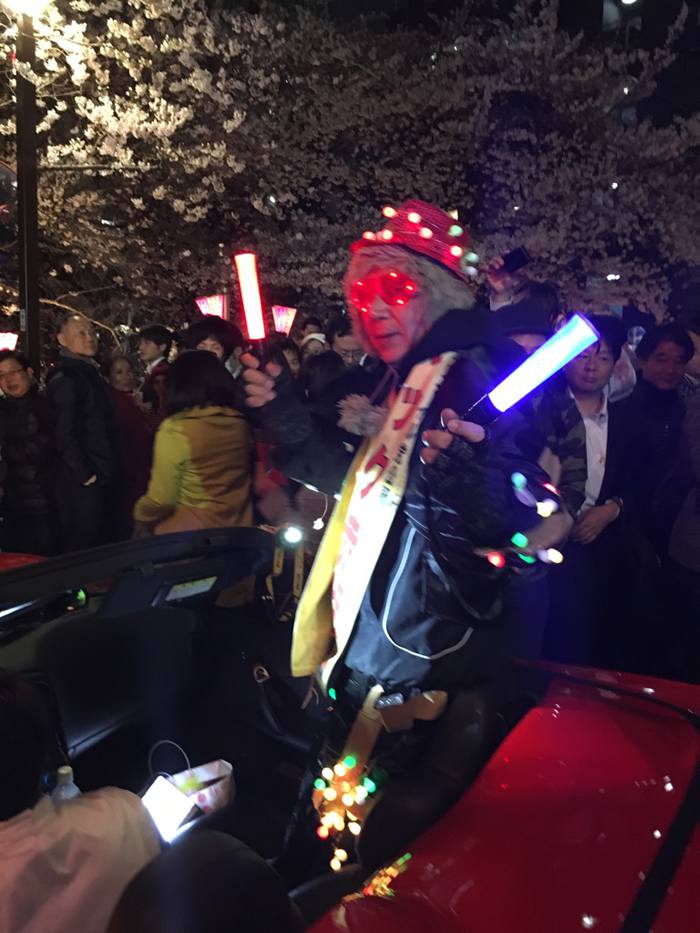
We then walked up the river and stopped by a pink champagne table where we parked it and enjoyed the spirit of Hanami.
Before I totally crashed from the jet lag, we also visited my sister’s friend’s high rise apartment with amazing views of Tokyo! It didn’t feel like real life, and it still seems like a dream!
I was in Japan for 8 days, so I have much more to say. To be continued!
You May Also Enjoy These Posts:
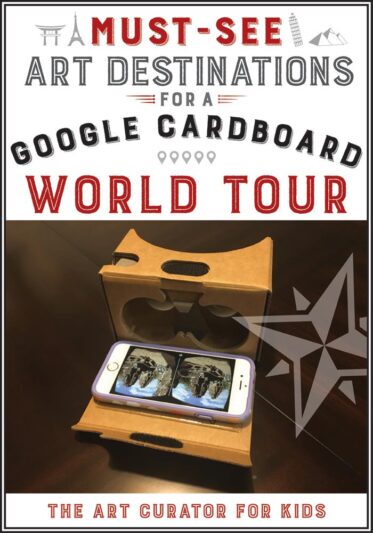
Reader Interactions
April 24, 2016 at 4:17 pm
There’s so much to Japan, isn’t there? I was there from 2001-2003 and although I’ve only written a little about it so far, I have several posts in the pipeline this year that have me excited to share!
I love seeing Japan again through the eyes of others, it brings back all of those memories!
April 28, 2016 at 10:37 am
Yes! It is astonishing to think about how much I saw in 7 days!
Leave a Comment Cancel reply
Your email address will not be published. Required fields are marked *
This site uses Akismet to reduce spam. Learn how your comment data is processed .

Get Art Inspiration To Your Inbox!
Free Worksheets!
*Free Bundle of Art Appreciation Worksheets*
In this free bundle of art worksheets, you receive six ready-to-use art worksheets with looking activities designed to work with almost any work of art.
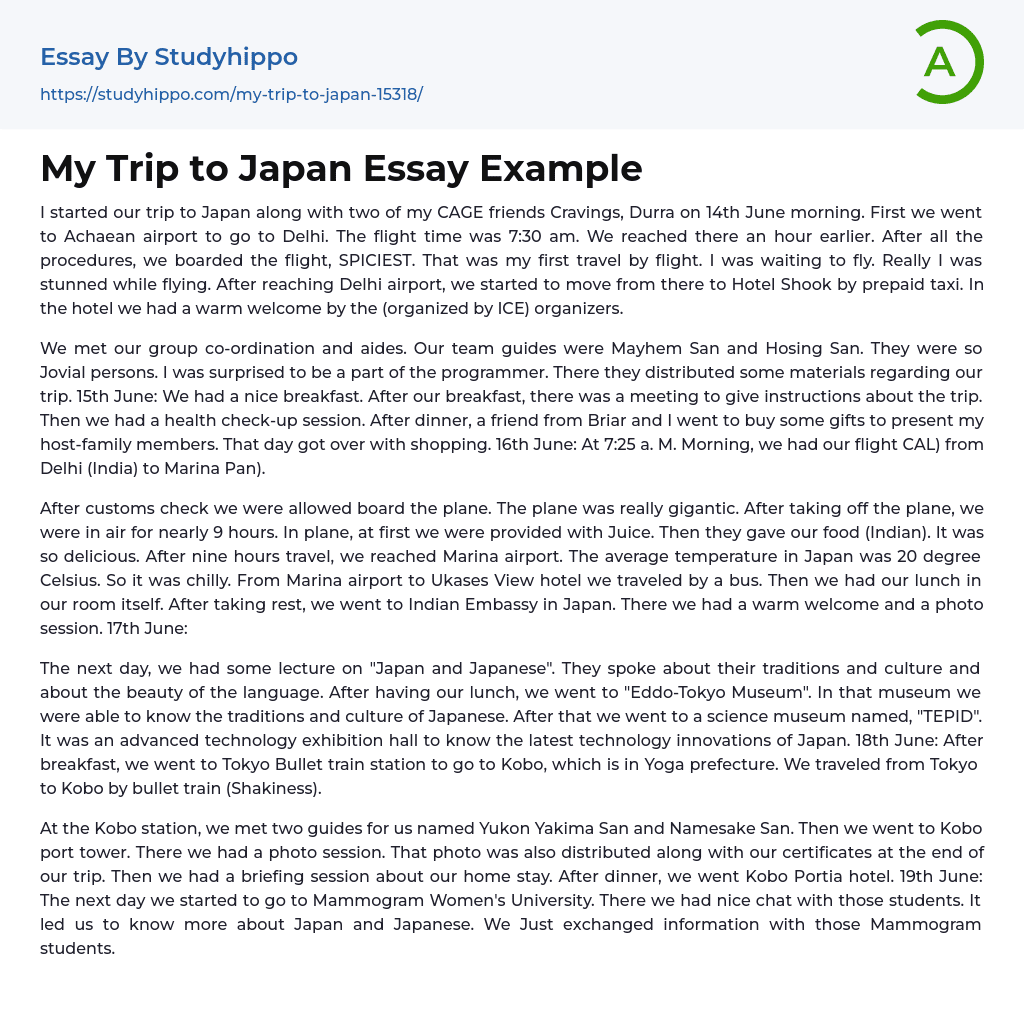
My Trip to Japan Essay Example
- Pages: 4 (1067 words)
- Published: October 16, 2017
- Type: Essay
I started our trip to Japan along with two of my CAGE friends Cravings, Durra on 14th June morning. First we went to Achaean airport to go to Delhi. The flight time was 7:30 am. We reached there an hour earlier. After all the procedures, we boarded the flight, SPICIEST. That was my first travel by flight. I was waiting to fly. Really I was stunned while flying. After reaching Delhi airport, we started to move from there to Hotel Shook by prepaid taxi. In the hotel we had a warm welcome by the (organized by ICE) organizers.
We met our group co-ordination and aides. Our team guides were Mayhem San and Hosing San. They were so Jovial persons. I was surprised to be a part of the programmer. There they distributed some materials regarding
our trip. 15th June: We had a nice breakfast. After our breakfast, there was a meeting to give instructions about the trip. Then we had a health check-up session. After dinner, a friend from Briar and I went to buy some gifts to present my host-family members. That day got over with shopping. 16th June: At 7:25 a. M. Morning, we had our flight CAL) from Delhi (India) to Marina Pan).
After customs check we were allowed board the plane. The plane was really gigantic. After taking off the plane, we were in air for nearly 9 hours. In plane, at first we were provided with Juice. Then they gave our food (Indian). It was so delicious. After nine hours travel, we reached Marina airport. The average temperature in Japan was 20 degree Celsius. So it was chilly. From
Marina airport to Ukases View hotel we traveled by a bus. Then we had our lunch in our room itself. After taking rest, we went to Indian Embassy in Japan. There we had a warm welcome and a photo session. 17th June:
The next day, we had some lecture on "Japan and Japanese". They spoke about their traditions and culture and about the beauty of the language. After having our lunch, we went to "Eddo-Tokyo Museum". In that museum we were able to know the traditions and culture of Japanese. After that we went to a science museum named, "TEPID". It was an advanced technology exhibition hall to know the latest technology innovations of Japan. 18th June: After breakfast, we went to Tokyo Bullet train station to go to Kobo, which is in Yoga prefecture. We traveled from Tokyo to Kobo by bullet train (Shakiness).
At the Kobo station, we met two guides for us named Yukon Yakima San and Namesake San. Then we went to Kobo port tower. There we had a photo session. That photo was also distributed along with our certificates at the end of our trip. Then we had a briefing session about our home stay. After dinner, we went Kobo Portia hotel. 19th June: The next day we started to go to Mammogram Women's University. There we had nice chat with those students. It led us to know more about Japan and Japanese. We Just exchanged information with those Mammogram students.
Then there was a restoration and discussion session on environment. After that session we had introduction ceremony for home-stay program. We were waiting to meet our host sister. My
host sister name is Arrack yoke. She took me to her home. Actually they took care of me as a son for three days. After dinner we were chatting till 1 a. M. Daily. 20th June: After having Japanese food for breakfast, host father, host sister and I went to Osaka Castle. There I saw some people in the traditional dress of samurai. I wore their dress and took a photo with them. Then we had our lunch in a Japanese restaurant.
After that my host sister and I went to her college. There, I saw Kabuki (their classical dance) videos. From college we went to Universal Studios Japan, a famous amusement park in Japan. We had a lot of fun there. We returned home and had dinner together. 21st June: That day we went to a hotel for farewell party. In that restaurant I had lunch with my host sister. Since that was my last day of home stay, they presented me with a memento. After the farewell party, we went to MINT KOBO to experience the art of Calligraphy. There we were taught how to use the calligraphy brush and how to write.
Then we had our dinner at an Indian restaurant. 22nd June: That day we went to garbage disposal centre (Insomnia West Municipal refusal disposal centre) to know the proper disposal of garbage. I learnt their sense of cleanliness. Then we went to an Italian restaurant to have lunch. After lunch we went to shopping market to use our Japanese skill through shopping. Then we had a workshop regarding our daily findings in Japan. In that workshop we came to know
more about Japan. 23rd June: We were in Kobo bullet train station to leave from Kobo. After two and a half hours journey we reached Tokyo.
On the way we were able to see Mount Fuji. Then we were roaming in Ukases area. After that we had lunch at a Japanese restaurant. While roaming in Sensuous temple, I met a couple from Achaean. 24th June: We were taken to Shagbark, the electronic town of Japan. There we went to a shop called Hydrophobia. That was a huge shop. That has separate floors for camera, TV, games and other electronic gadgets. Then we had our lunch at an Indian restaurant. There was a meeting to give instructions about briefing for departure and post- programmer questionnaire. Then we had workshop presentation session.
After that, here was a farewell dinner in Ukases hotel. 25th June: We had our last breakfast in Japan. Then we left the hotel and reached Marina airport by bus. It was really emotional to leave a wonderful place like that. I wish to visit again. After nine hours of travel we reached India. We stayed in Hotel Samara. The next day morning, we went to Delhi airport to return to Achaean. My trip to Japan is very memorable for me. I learnt a lot about enjoying life. I would go to Japan again if I get a chance. I wish to thank Anna University and all the ICE members for giving this great opportunity to me.
- Toy "R" Us Japan (a) Essay Example
- The Impact of Globalisation on Japan Essay Sample
- Japanese Anime and Manga Essay Example
- Japan's economy and the Coco cola company Essay Example
- Japan Business Essay Example
- One of Japan's Most Successful Companies Essay Example
- Japanese capital structure Essay Example
- The Spread of Christianity to Japan Essay Example
- Japan / China Response Towards Western Penetration Essay Example
- Analysis of Toys R Us Case in Japan Essay Example
- Moto: Coming to America from Japan Essay Example
- The Tradition of the Onnagata Essay Example
- The Sound Of Waves Essay Example
- China and Japan: 1450-1750 Essay Example
- Japanese Food, Culture, and the Tanabata Festival Essay Example
- Bangladesh essays
- China essays
- Hong Kong essays
- India essays
- Japan essays
- Kuala Lumpur essays
- Malaysia essays
- Manila essays
- Pakistan essays
- Philippines essays
- Singapore essays
- Vietnam essays
- Vietnamese essays
Haven't found what you were looking for?
Search for samples, answers to your questions and flashcards.
- Enter your topic/question
- Receive an explanation
- Ask one question at a time
- Enter a specific assignment topic
- Aim at least 500 characters
- a topic sentence that states the main or controlling idea
- supporting sentences to explain and develop the point you’re making
- evidence from your reading or an example from the subject area that supports your point
- analysis of the implication/significance/impact of the evidence finished off with a critical conclusion you have drawn from the evidence.
Unfortunately copying the content is not possible
Tell us your email address and we’ll send this sample there..
By continuing, you agree to our Terms and Conditions .

IMAGES
VIDEO
COMMENTS
Essay on Why I Want to Visit Japan. This essay sample was donated by a student to help the academic community. Papers provided by EduBirdie writers usually outdo students' samples. Japan is a fascinating and beautiful country in East Asia. Japan has lots of different traditions, festivals, landforms, and tourist attractions.
Japan is one of the most attractive places for tourists, millions of people each year travel there to try its exotic and traditional food. Another reason why is because of the beautiful sakura flowers that only bloom once a year. Japan also has one of the most unique hotels, one being a capsule hotel, like the name says you live in a capsule.
Students are often asked to write an essay on My Trip To Japan in their schools and colleges. And if you're also looking for the same, we have created 100-word, 250-word, and 500-word essays on the topic. Let's take a look… 100 Words Essay on My Trip To Japan My Journey to Japan. I was thrilled to visit Japan, a country of islands.
My first international trip marked the culmination of months of planning and anticipation. From the moment I set foot in the unfamiliar airport, I was struck by a blend of emotions—anxiety, excitement, and wonder. The foreign languages echoing around me and the diversity of faces served as a vivid reminder that I was entering a realm entirely ...
Kay's essay gives good insight into the best times to visit Japan. 5. A Day Trip To Kobe by David Swanson. "When planning a visit to Kobe, consider the fact that the city has been completely rebuilt since 1995, following the great Hanshin earthquake that leveled much of the city.
2. Shoe etiquette in Japan is a real thing. It's considered impolite to wear shoes inside in Japan. Pretty much anywhere you go - hotels, temples, restaurants and tourist sites - you'll be expected to remove your shoes at the small atrium just inside the door, a space known as 'genkan'. As with many traditions in Japan, this one harks back over many generations.
That's why I put together a "first-timers" Japan travel itinerary, built on my 20+ years of traveling to and from Japan. This sample trip is for people heading to Japan for 1 to 2 weeks (which seems like the standard visit time for most people). Of course, there are so many things to see in Japan besides those featured on this trip itinerary.
My transformative first trip to Japan · Part 1. 11 min read December 9, 2021 #Photoessays #Japan. This part one of a four part series. Series. Part 1 · Tokyo with friends. Part 2 · Tokyo alone. Part 3 · Kyoto. Part 4 · Hiroshima. Six years ago, I sat on a bench in the international terminal at SFO, my eyes gazing at an Asiana Boeing 777.
Kyoto is also home to the famous Fushimi Inari Taira - an incredible shrine of thousands of red torii gates that line the 4 kilometre stretch to the sacred Mt. Inari. Nature lovers will enjoy the bamboo groves, whilst those looking for a city escape can always make a quick trip to Osaka - just a 30 minute express train ride away!
One of the first things to consider when heading to Japan is where you'll be flying into. Many first timers opt to head to Tokyo, which is served by two international airports - Haneda (HND) and Narita (NRT). Something that visitors aren't often aware of is the difference in distance between them. Haneda is located under 20 kilometers from ...
Join the Facebook Group. To ease your mind about travelling to Japan for the first time, this guide includes what to expect on your first trip to Japan regarding transportation, accommodations, food, onsen, and a whole lot more. Japan travel tips based on personal experience!
Article By: Isaac Goodman-Boyd. japan. I loved Japan before I visited there- loved their video games, TV shows, martial arts, and amazing sword fights. But my only contact with Japan was through the Internet. Reading Japanese comic books (Manga) and watching Japanese cartoons (Anime) are my favorite pastime. So on Christmas day, when my ...
My First Visit To Japan. Born and raised in the UK, I fell in love with Japan towards the end of the eighties and discovered a culture that was to change my life forever. My first contact with Japanese culture was through anime (specifically Macross) and games (specifically Strider for the Mega Drive). I started to self study Japanese and as I ...
Let's Practice to Write Your Essay about Japan. Practice 1. Practice 2. Practice 3. Conclusion. Japan is a place of dreams both both the admirers of the ancient countryside lifestyle and the "camp" of city-lovers. No wonder this country is among those topics students choose for the essays about traveling.
TRIP TO JAPAN Tang, Chia-Yu EAP writing 03/03/2014 Japan is an appreciative and cultured country. ... First of all, if you are concerned about money, I introduce some appropriate places for you. You can go to the Imperial Palace. It is the main residence of the emperor of Japan. ... Japan: Tokyo and Beautiful City Tokyo Essay. Japan (Tokyo) My ...
This is my first article about Japan, and I'm going to tell you about my experience from having traveled there. I was there in 2016 from March 19th to April 24th, and it was my first time going ...
MBU has a short three-week "May term" every spring where it is possible for professors to take small groups of students abroad for mini-study tours. Over the years, I took students to Japan, China, Korea, Russia, Australia and New Zealand, Israel-Palestine, and all over Europe, including Switzerland, Italy, and Croatia.
Get help on 【 My First Trip to Japan 】 on Graduateway A huge assortment of FREE essays & assignments Find an idea for your paper! Get help now. Essay Samples. Menu; Art 487 papers; American Dream 131 papers; ... Japan Essay, Research PaperIn Japan And Its World, by Marius B. Jansen, Jansen describes the altering thoughts the Japanese have ...
In the essay "The Scar," the author Kildare Dobbs reports the parallel stories of Emiko; a young Japanese girl and Captain Robert Lewis; a U.S. army Captain harrowing events of Aug 6/1945 in Hiroshima, a day that forever changed their lives. ... Ever since I first set foot on Japan, I wanted to visit the two cities and to pray for peace at ...
Conclusion. In conclusion, my first travel experience was a significant milestone in my life. It was an adventure filled with discovery, learning, and personal growth. It served as a reminder of the vastness of the world and the richness of human experience. Traveling is not just about the destinations we visit, but the journey we undertake and ...
It was my first time visiting an Asian country, so I was a little nervous and anxious about what to expect. I didn't speak or read the language. ... I have so many stories from our trip, but to kick off my Japan posts, I put together a photo essay of Japan to share some of my favorite pictures! photo essay of japan: tokyo:
Day 1: Travel. Exhausted but excited! I left bright and early on Wednesday morning from DFW airport. I flew 3-4 hours to Detroit and from there, I took a 13 hour plane ride to Tokyo. I slept very little and watched lots of movies. I splurged for the Delta Comfort seat, so I had a little bit of extra leg room.
Text preview. I started our trip to Japan along with two of my CAGE friends Cravings, Durra on 14th June morning. First we went to Achaean airport to go to Delhi. The flight time was 7:30 am. We reached there an hour earlier. After all the procedures, we boarded the flight, SPICIEST. That was my first travel by flight. I was waiting to fly.
President Joe Biden and first lady Jill Biden welcome Japan's Prime Minister Fumio Kishida and his spouse Yuko Kishida at the South Portico of the White House in Washington, DC, on April 9.